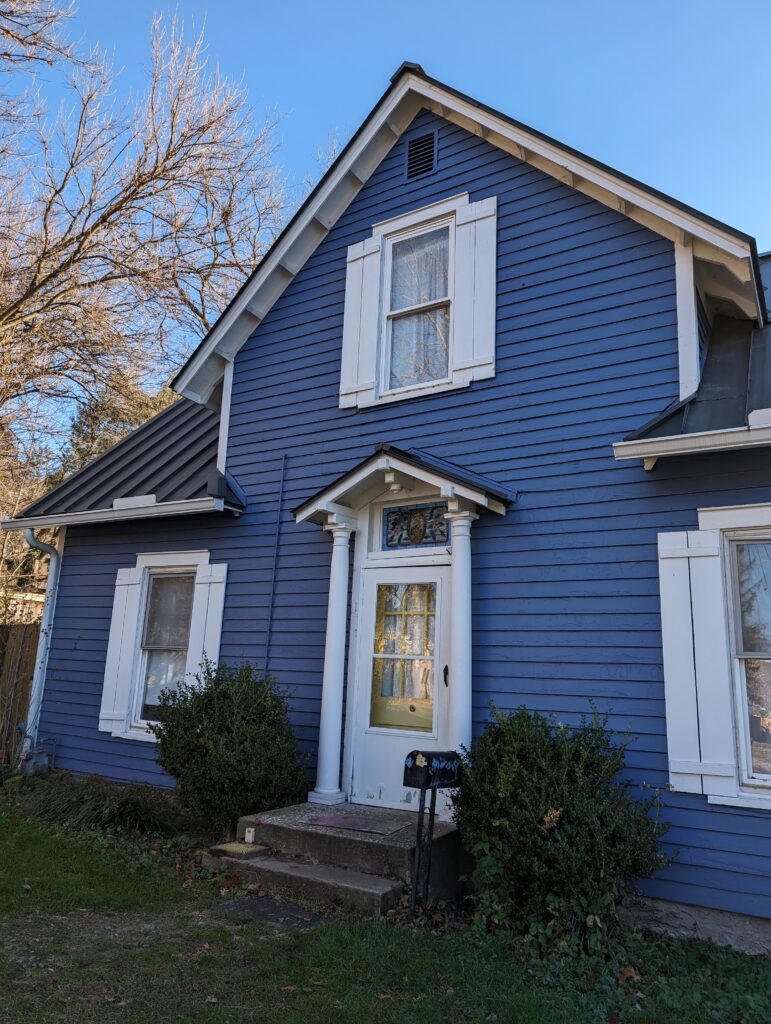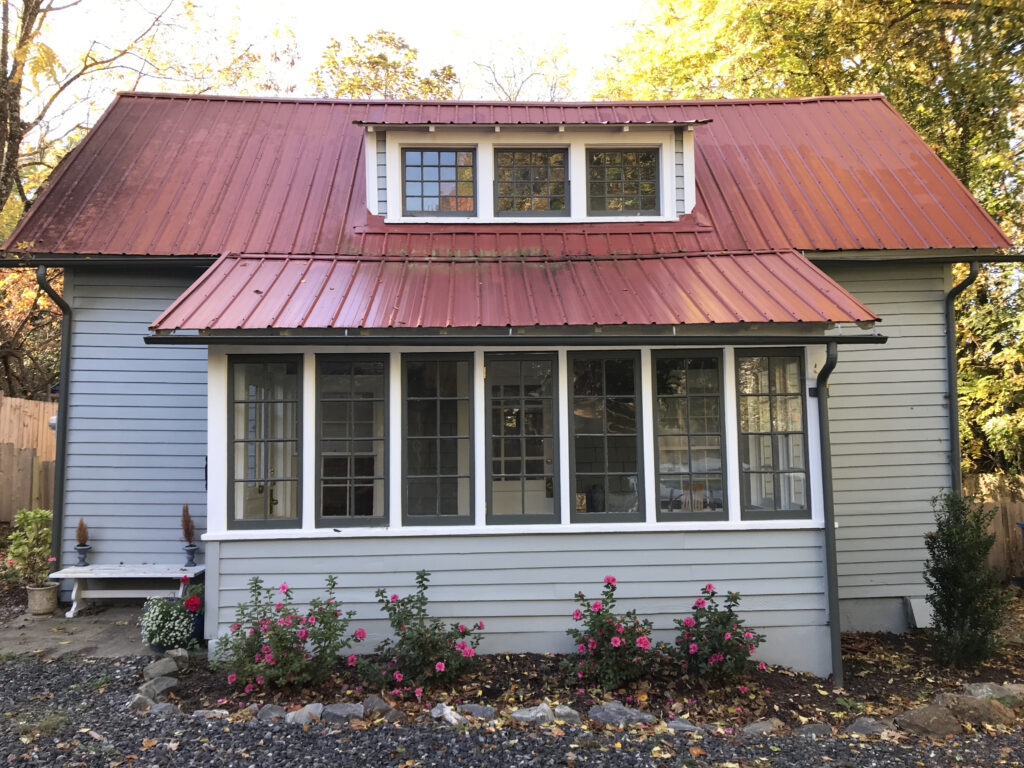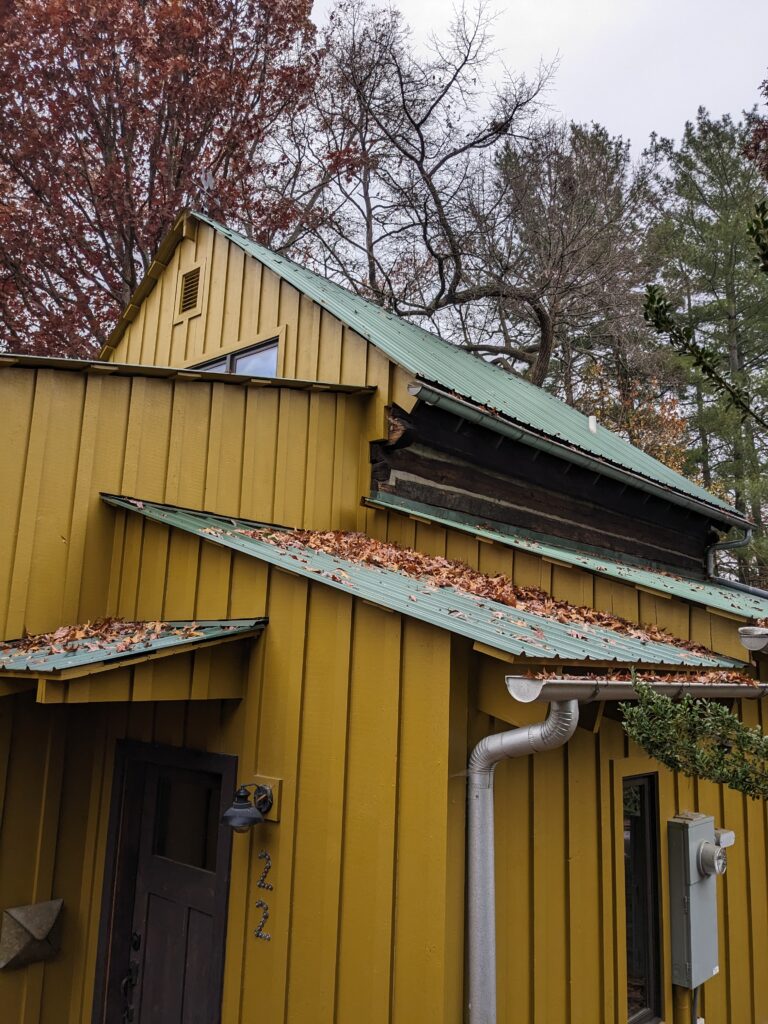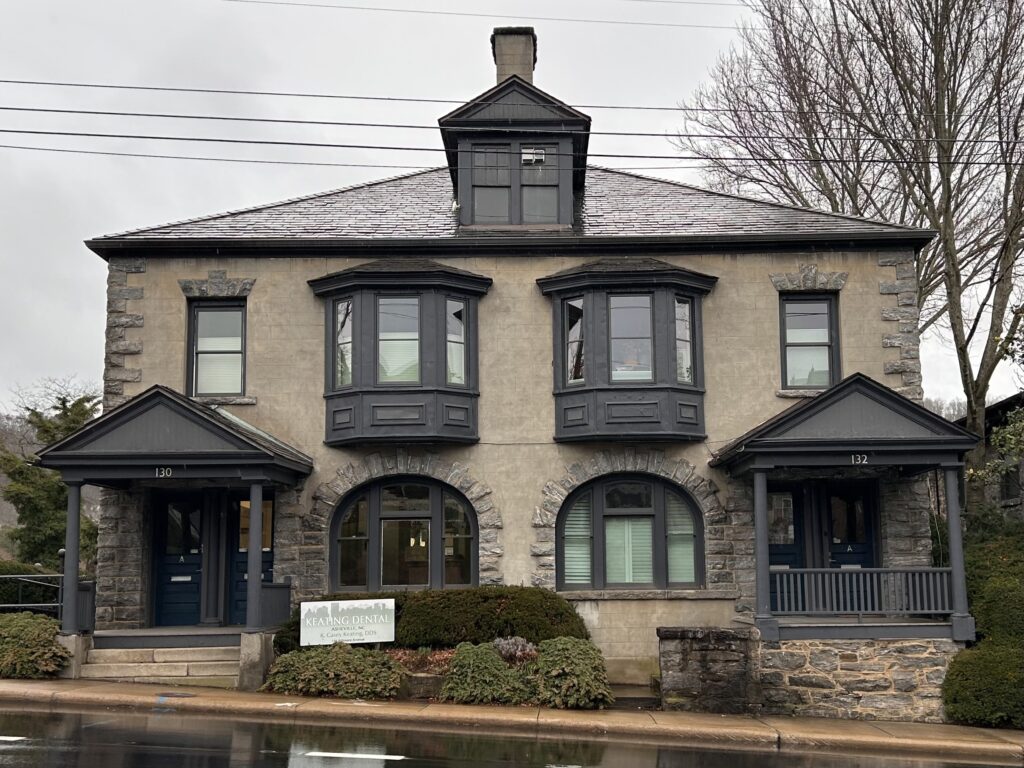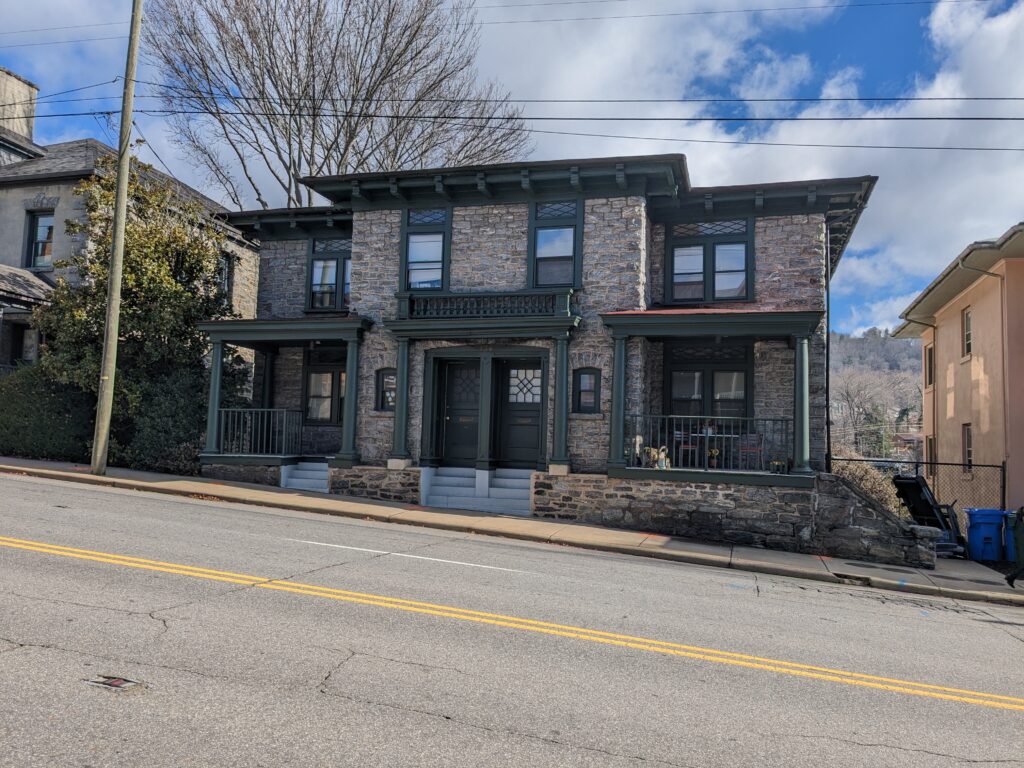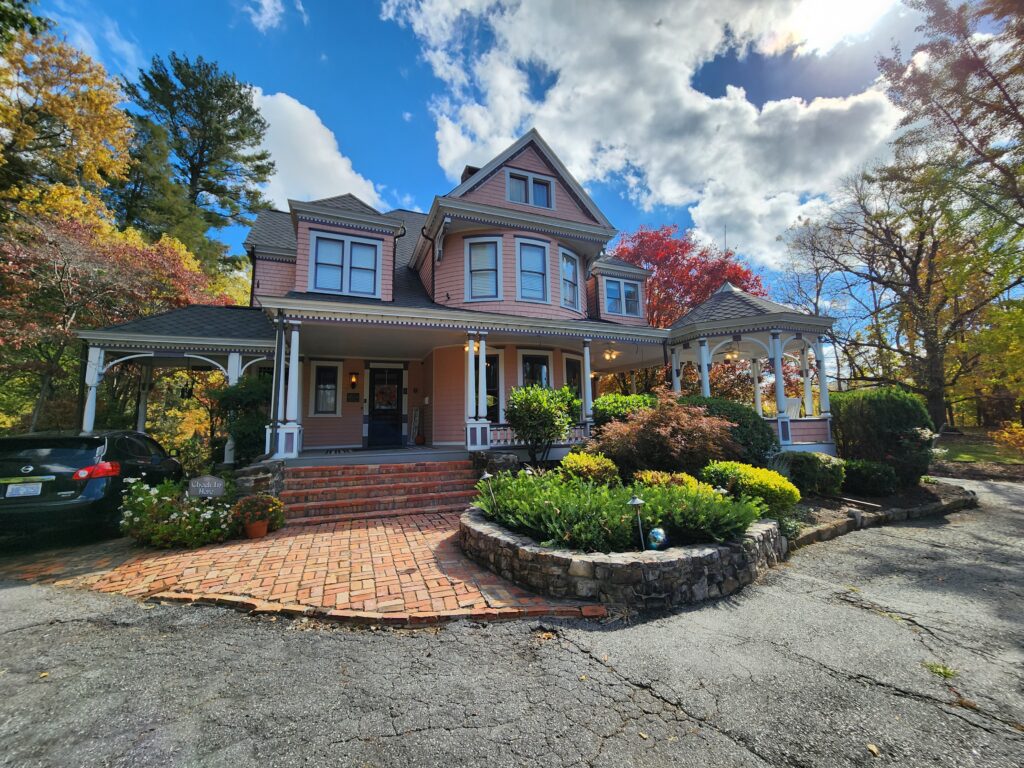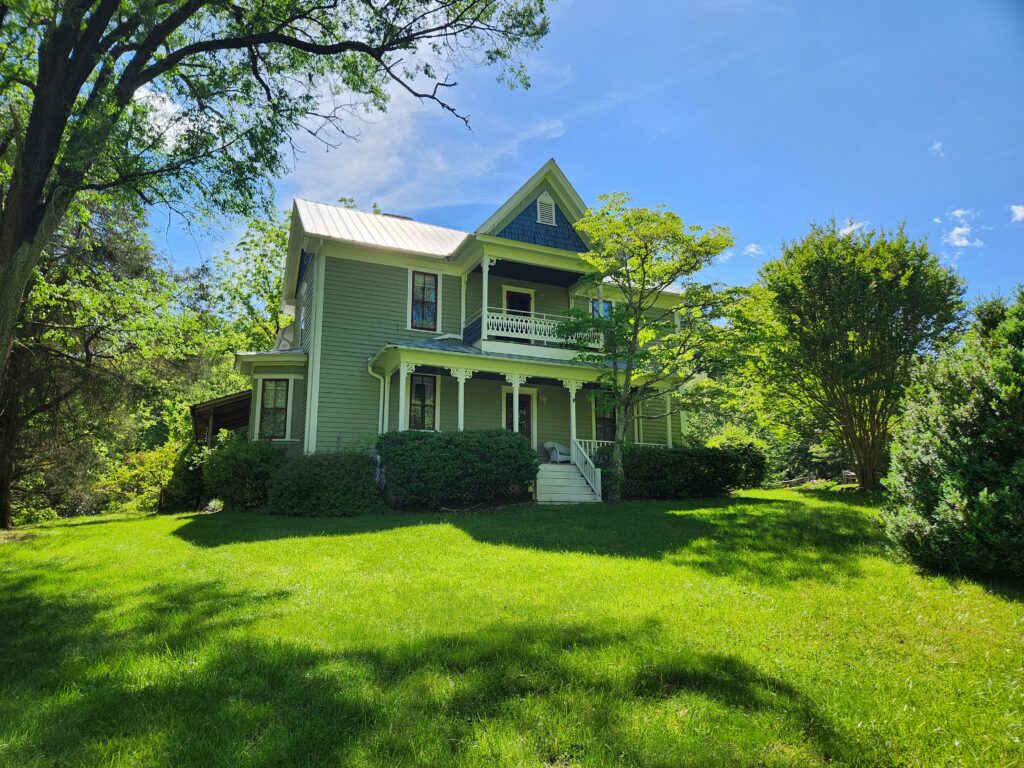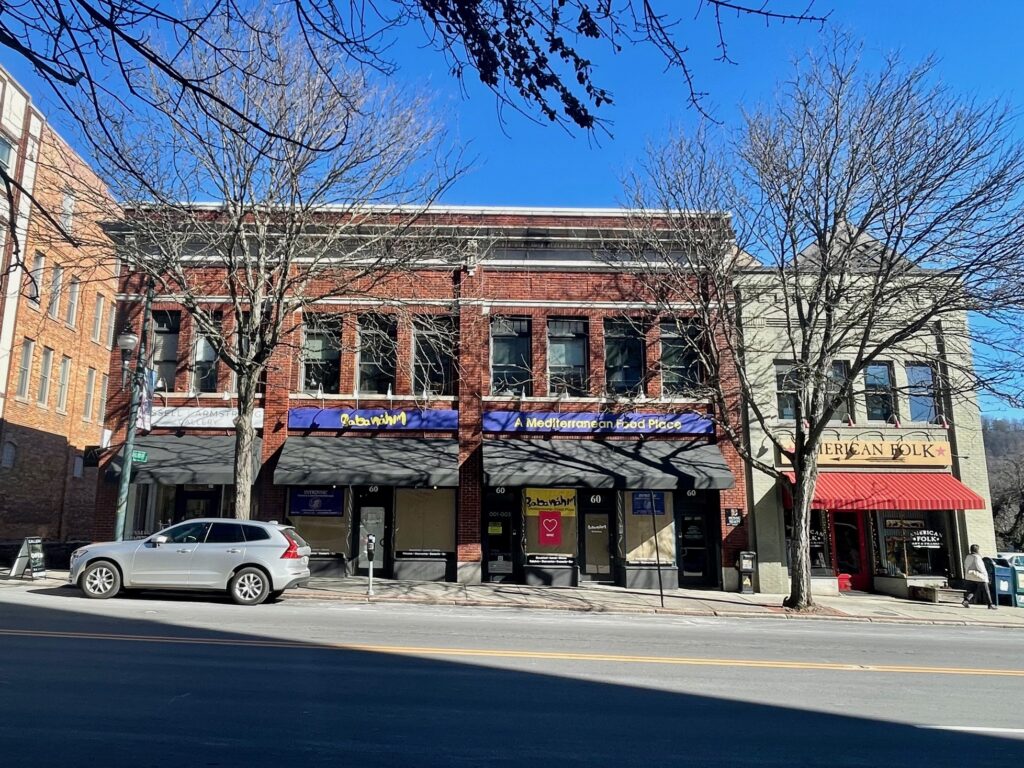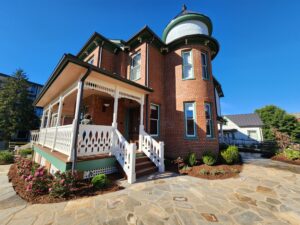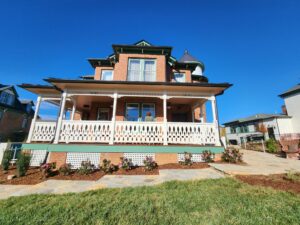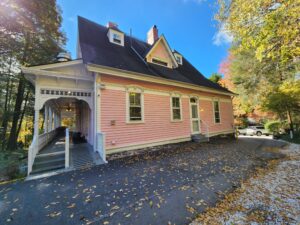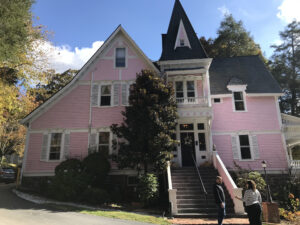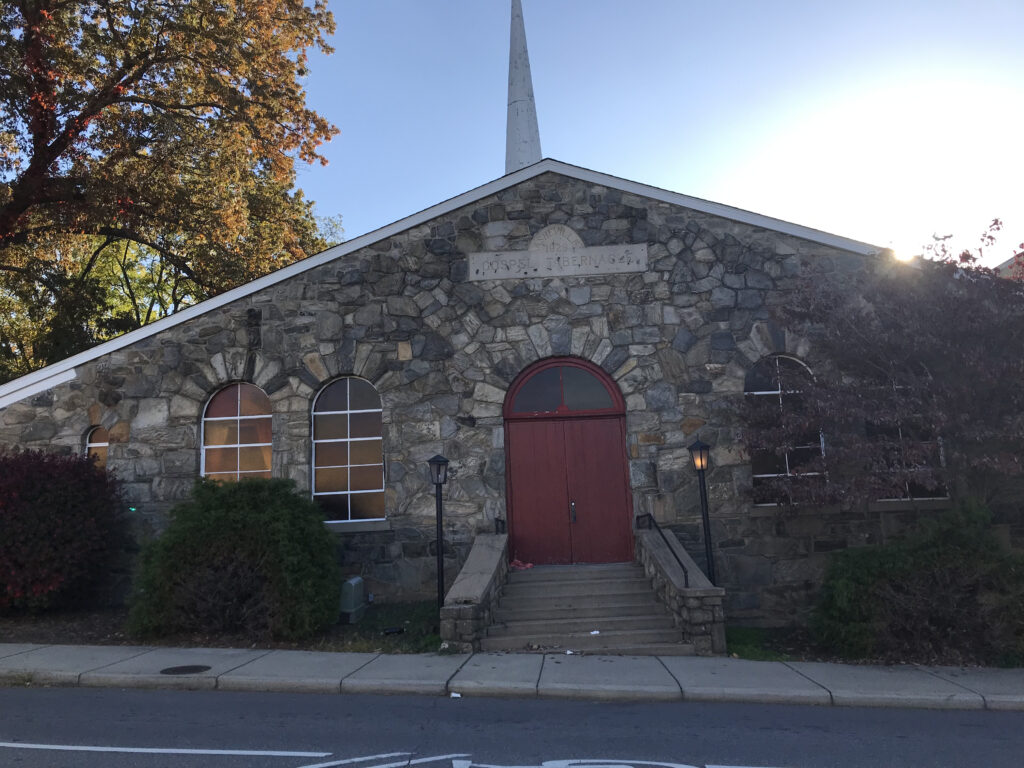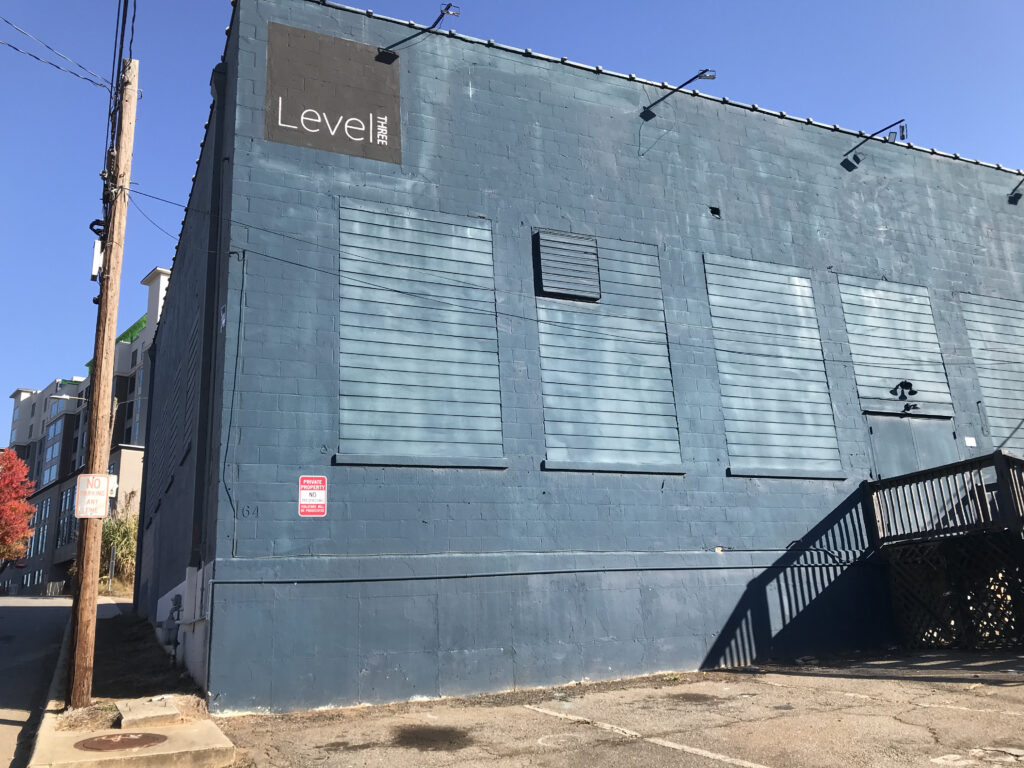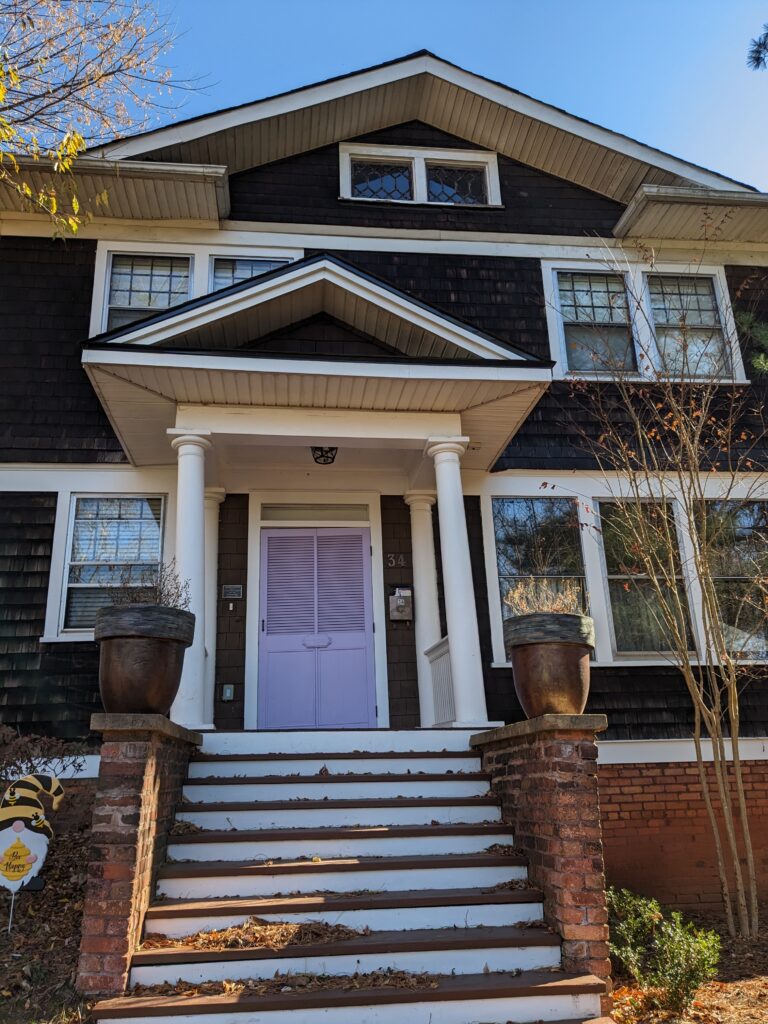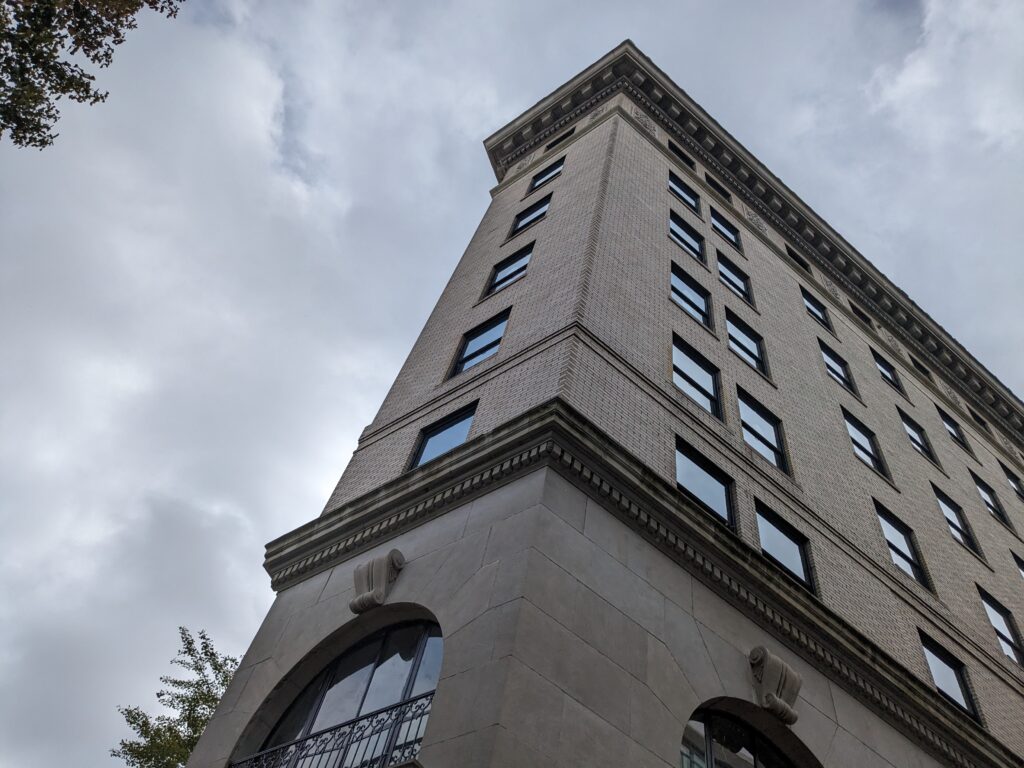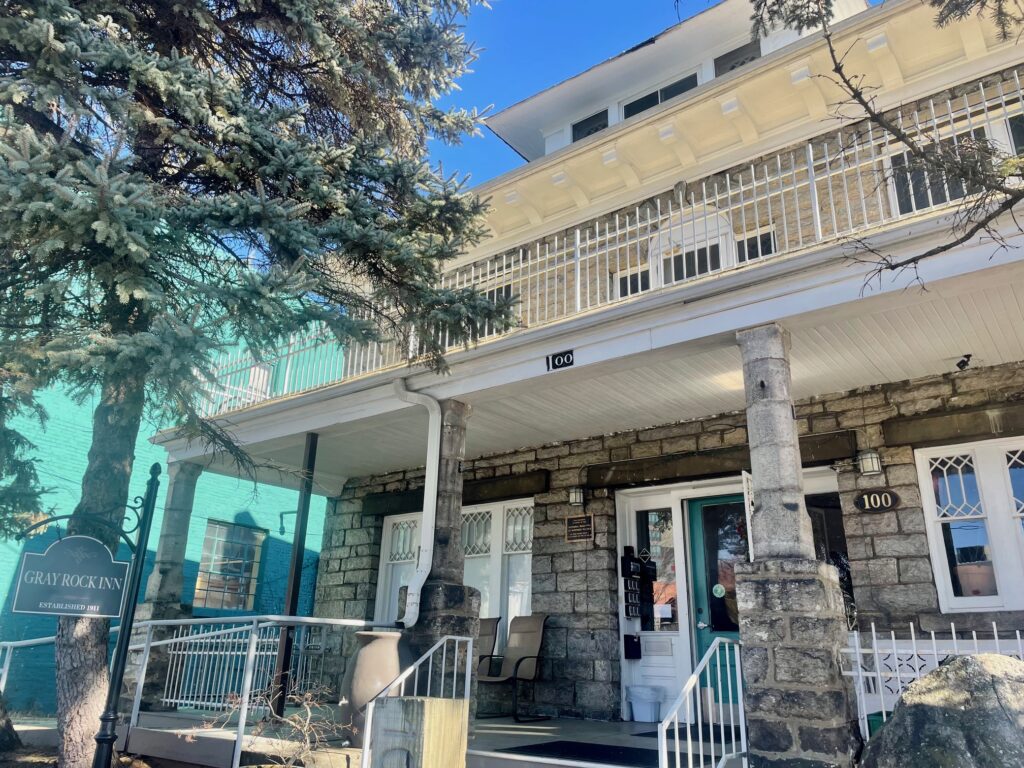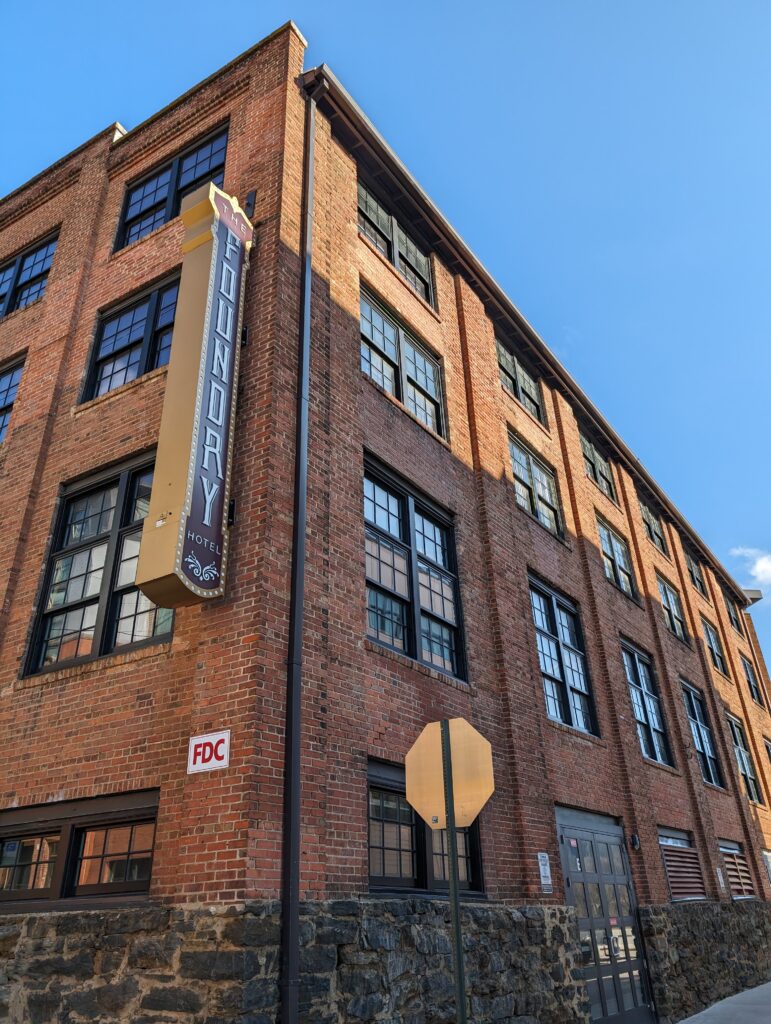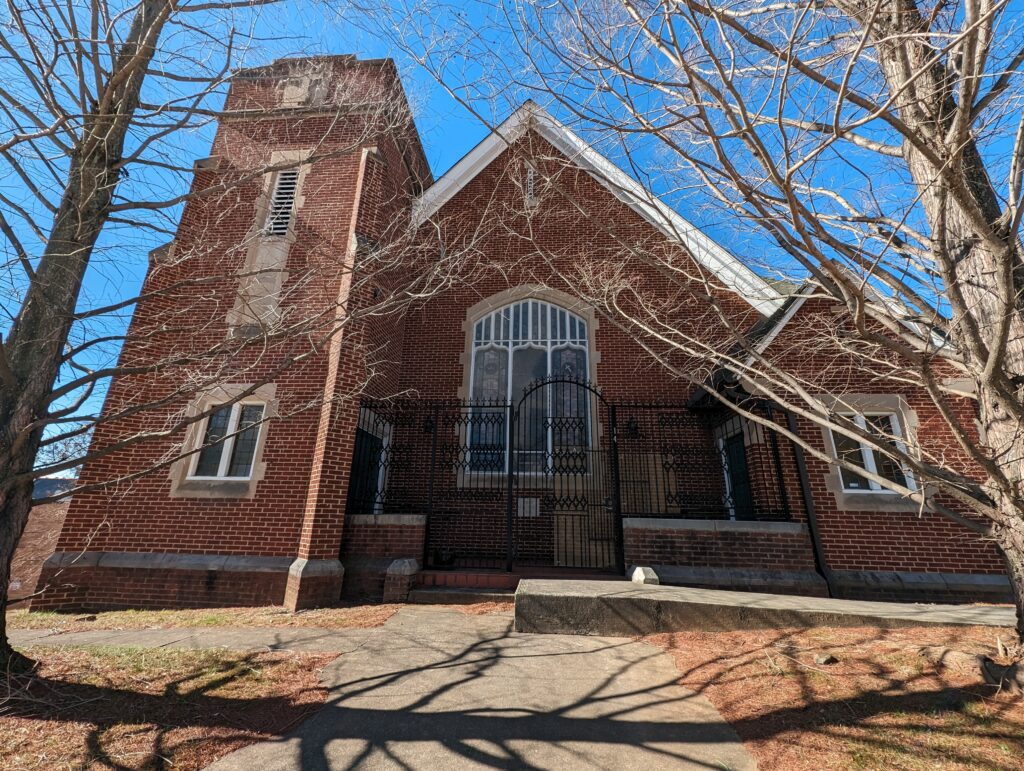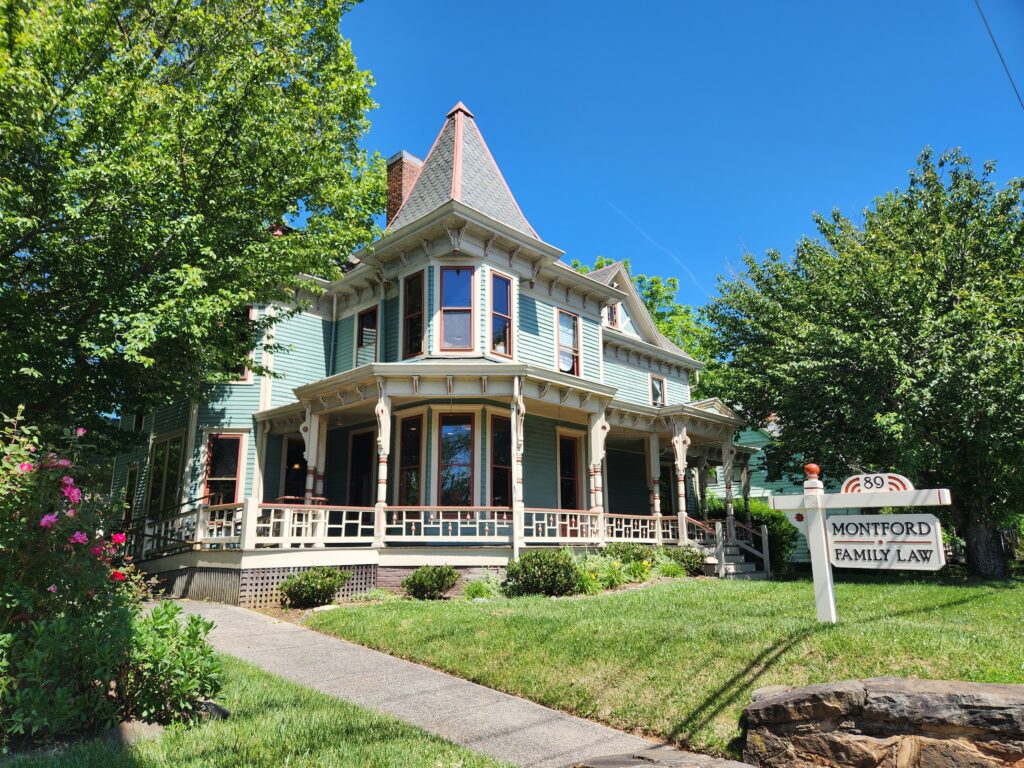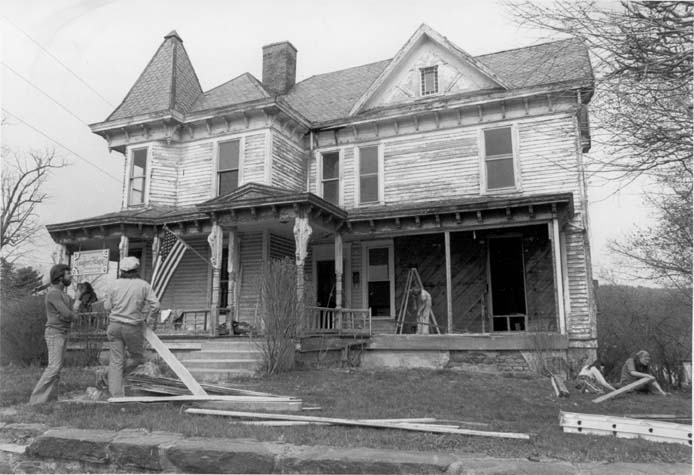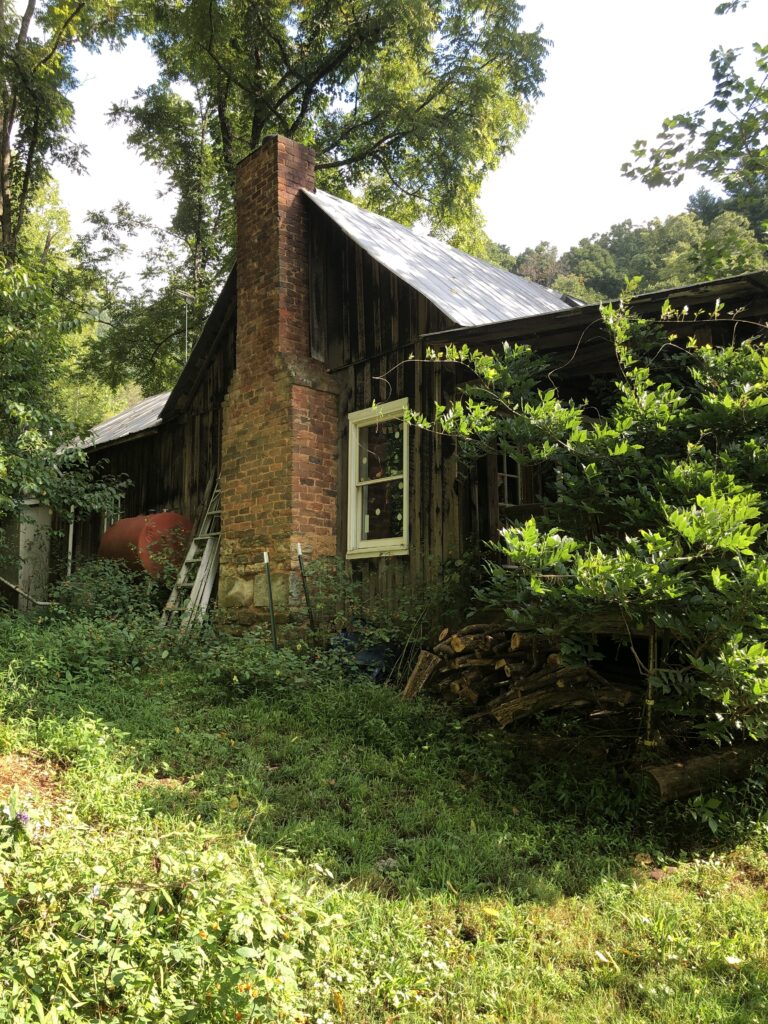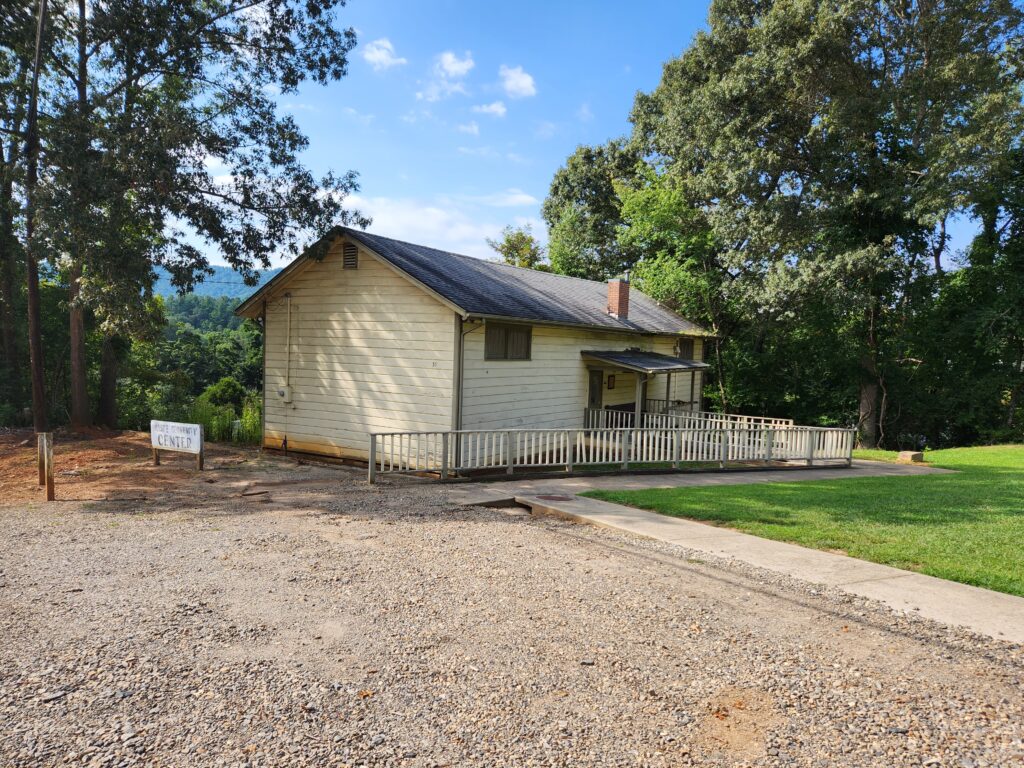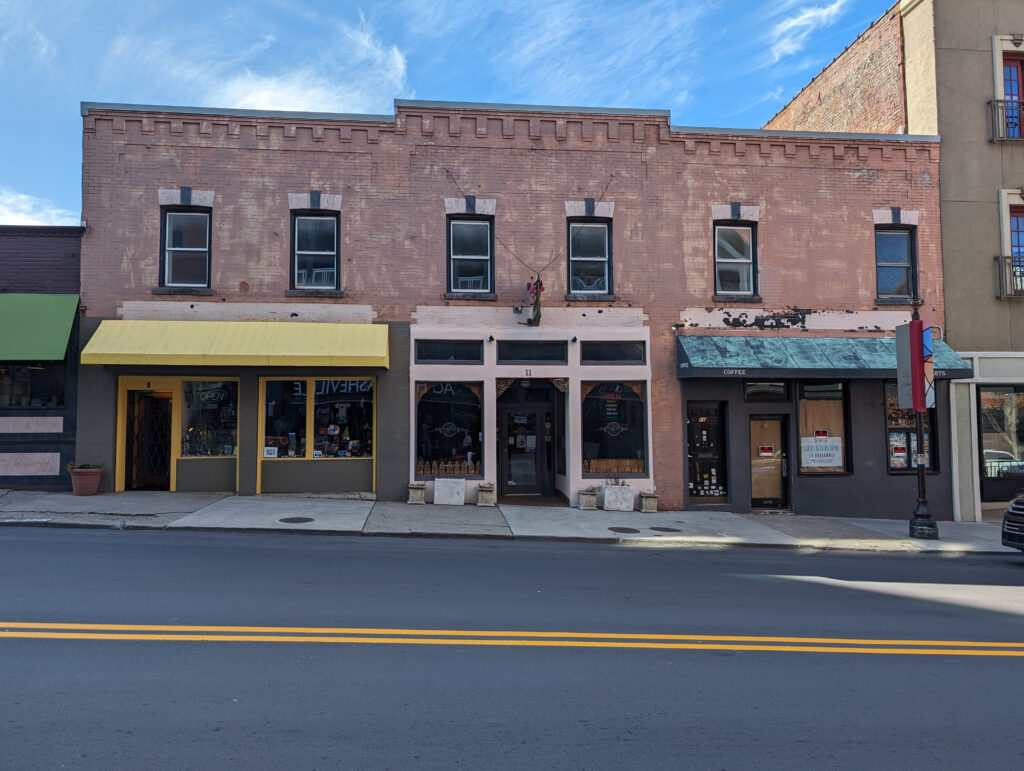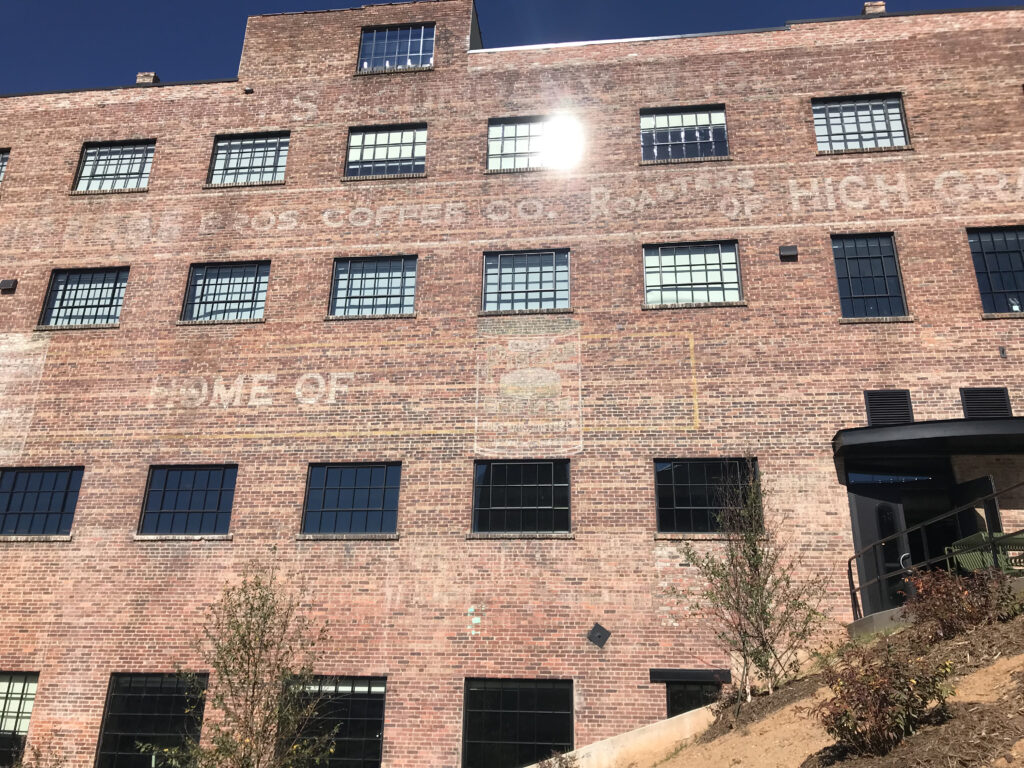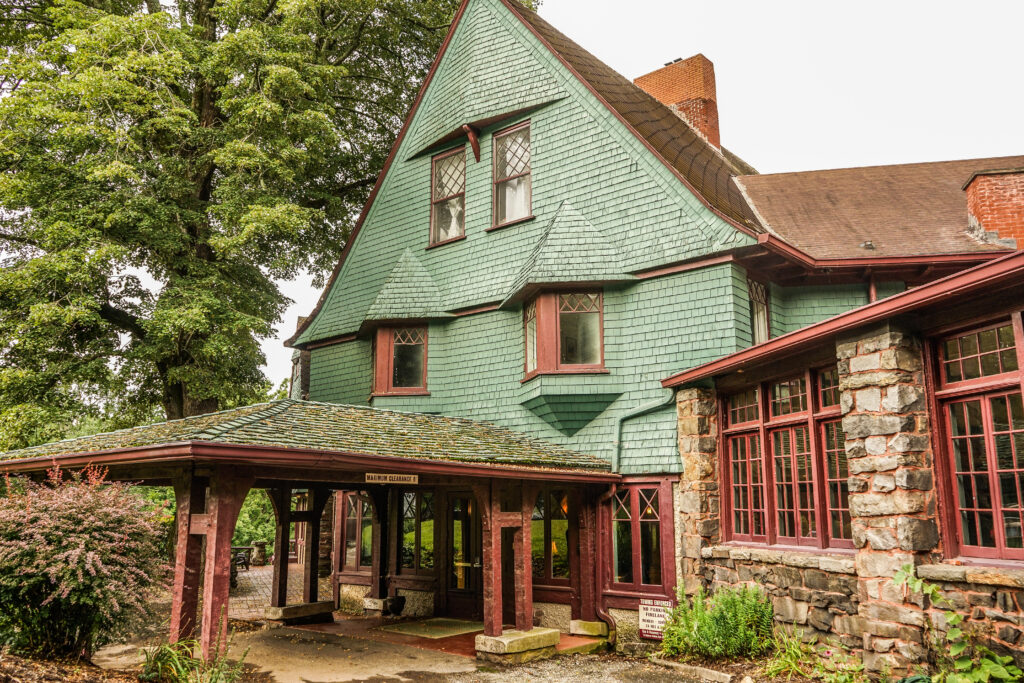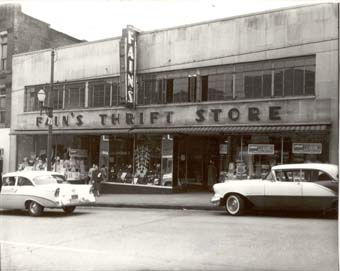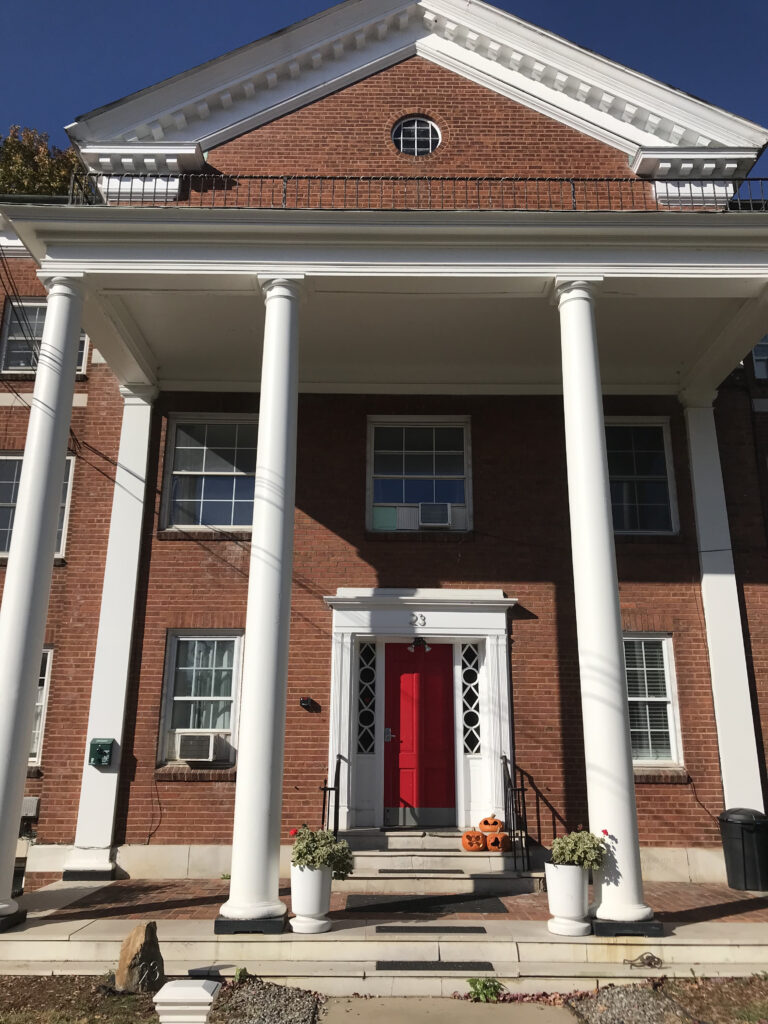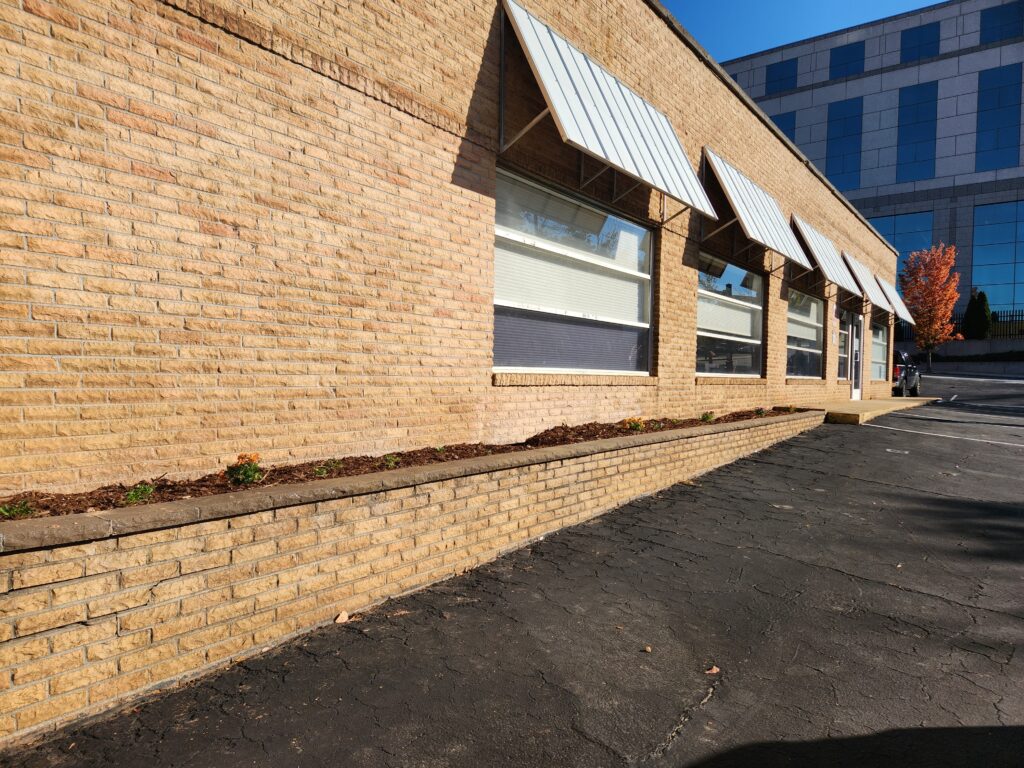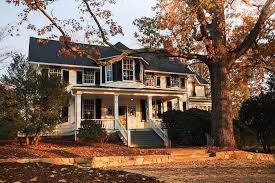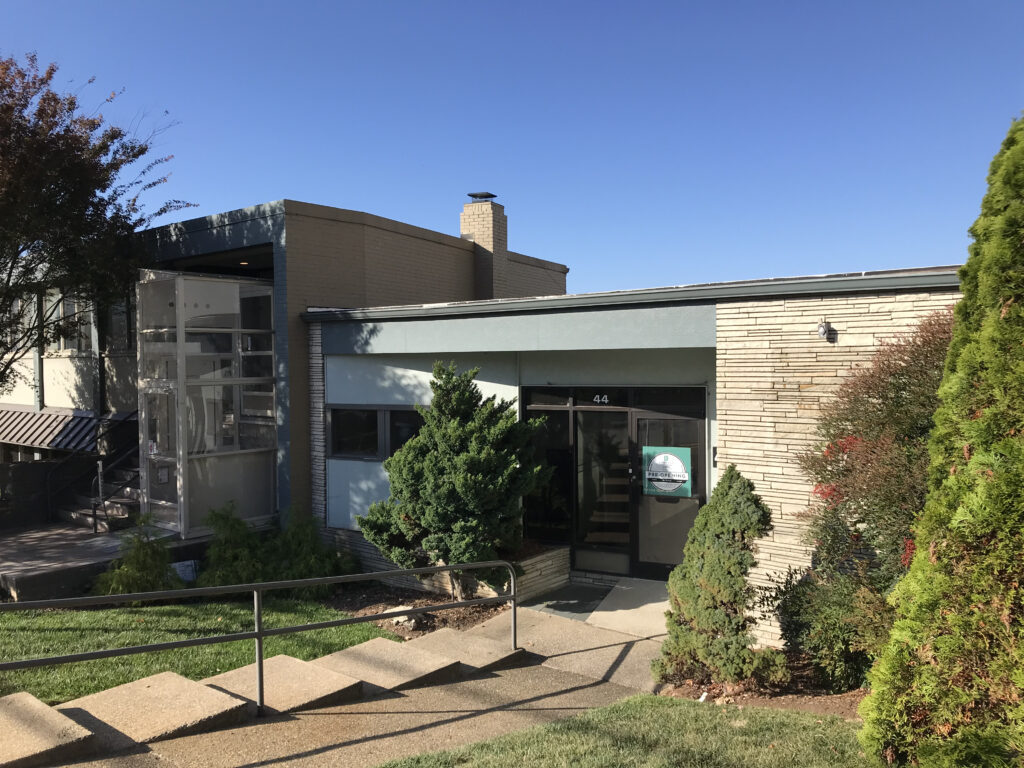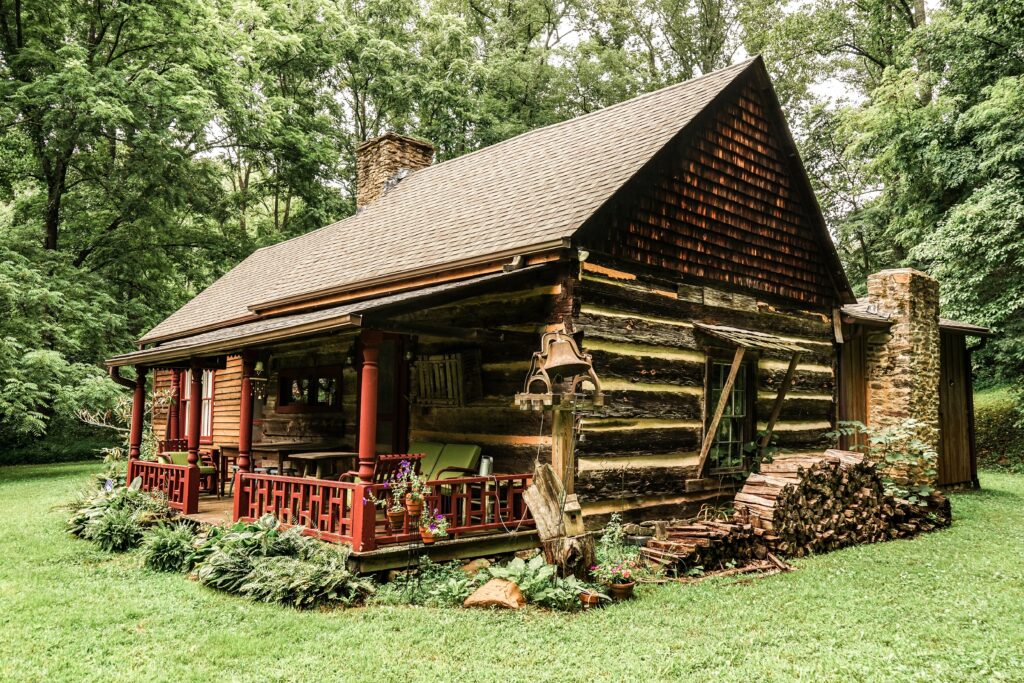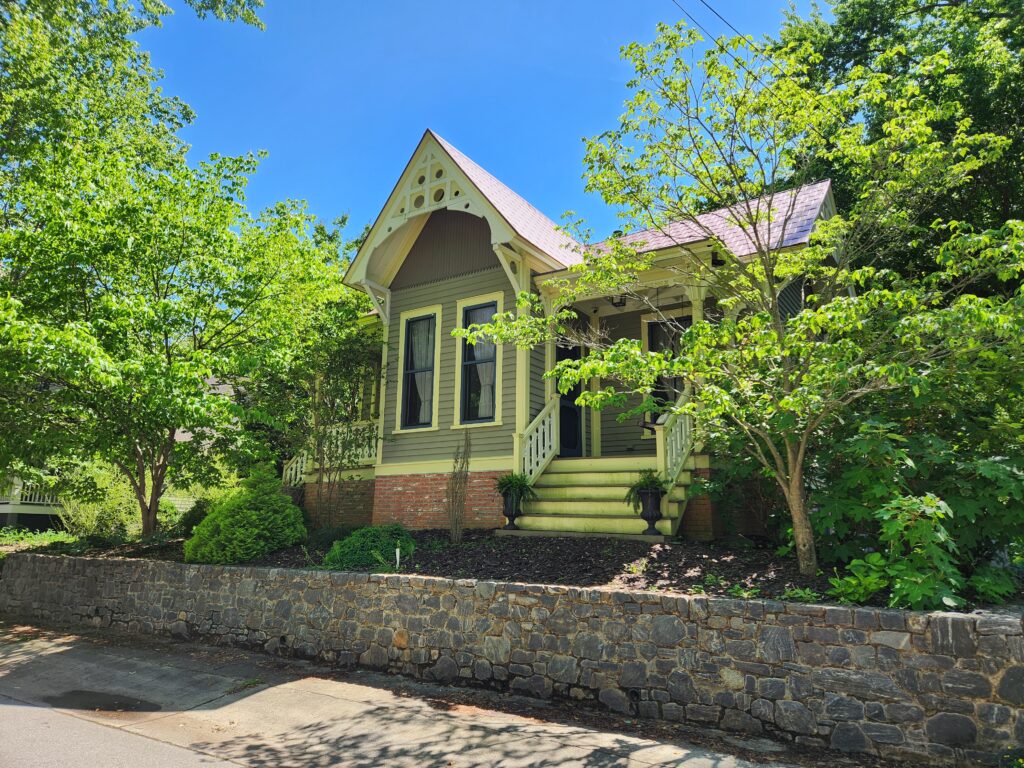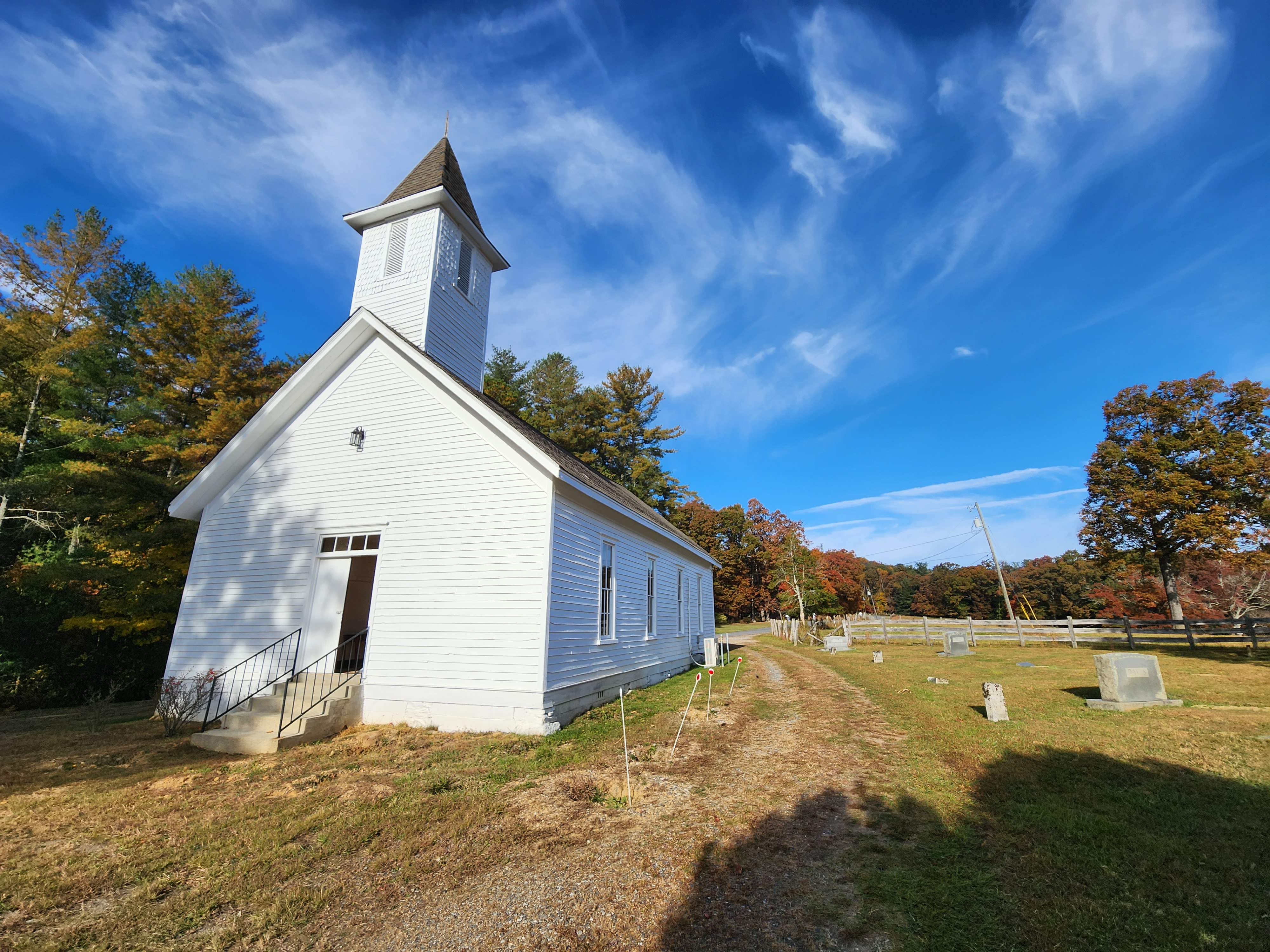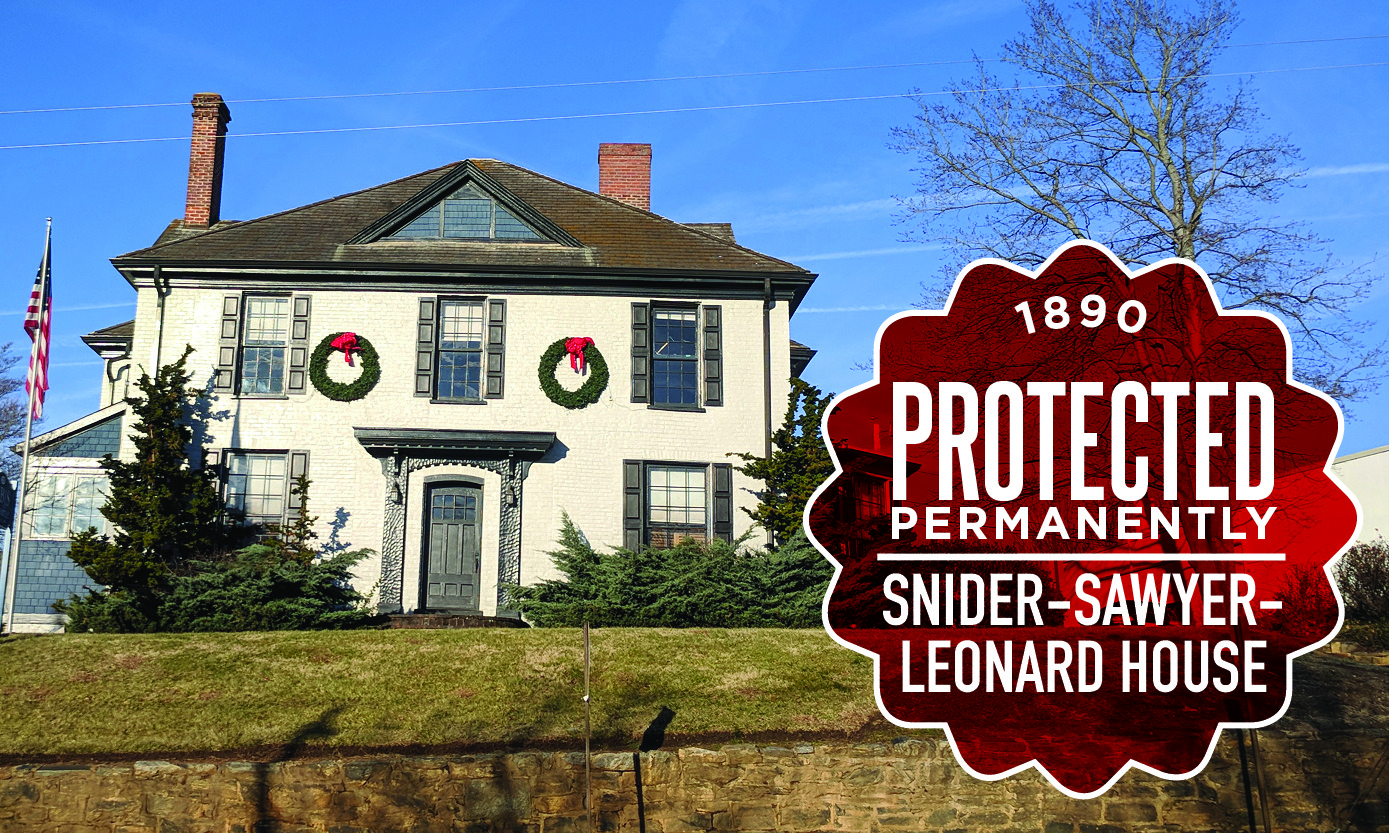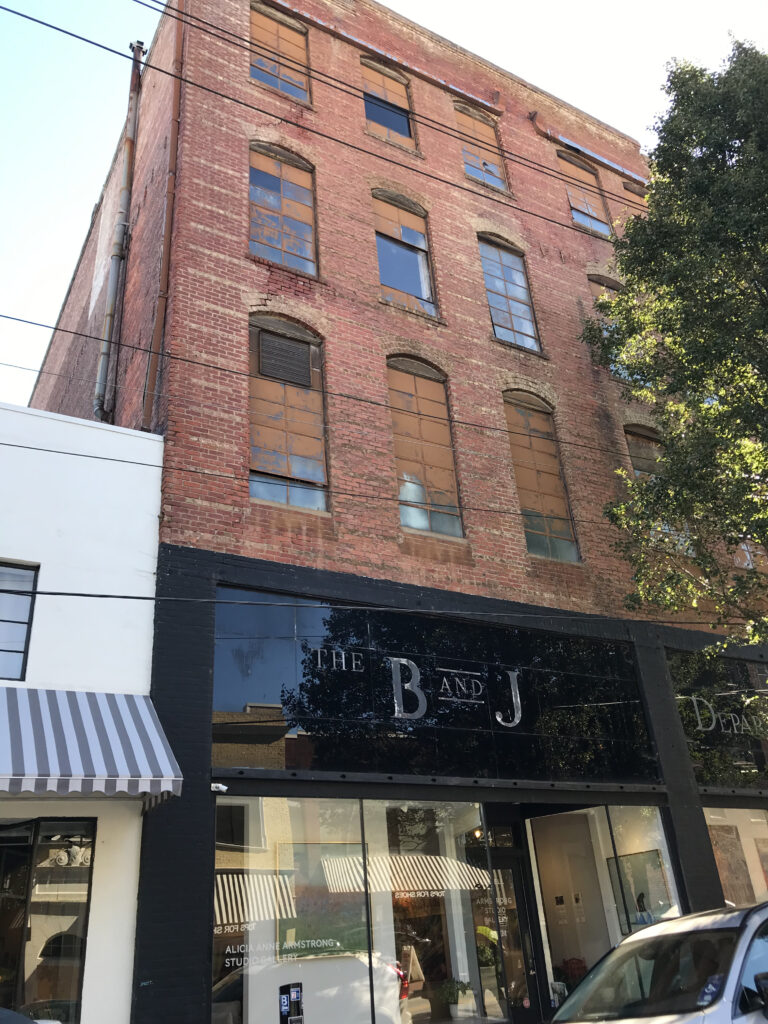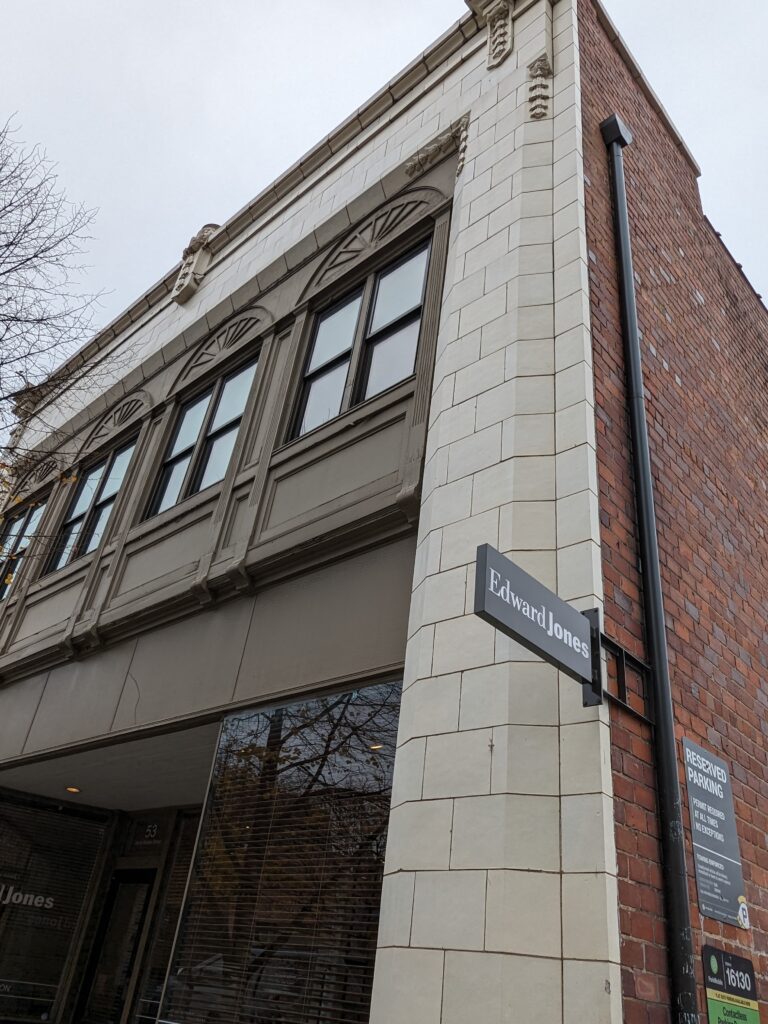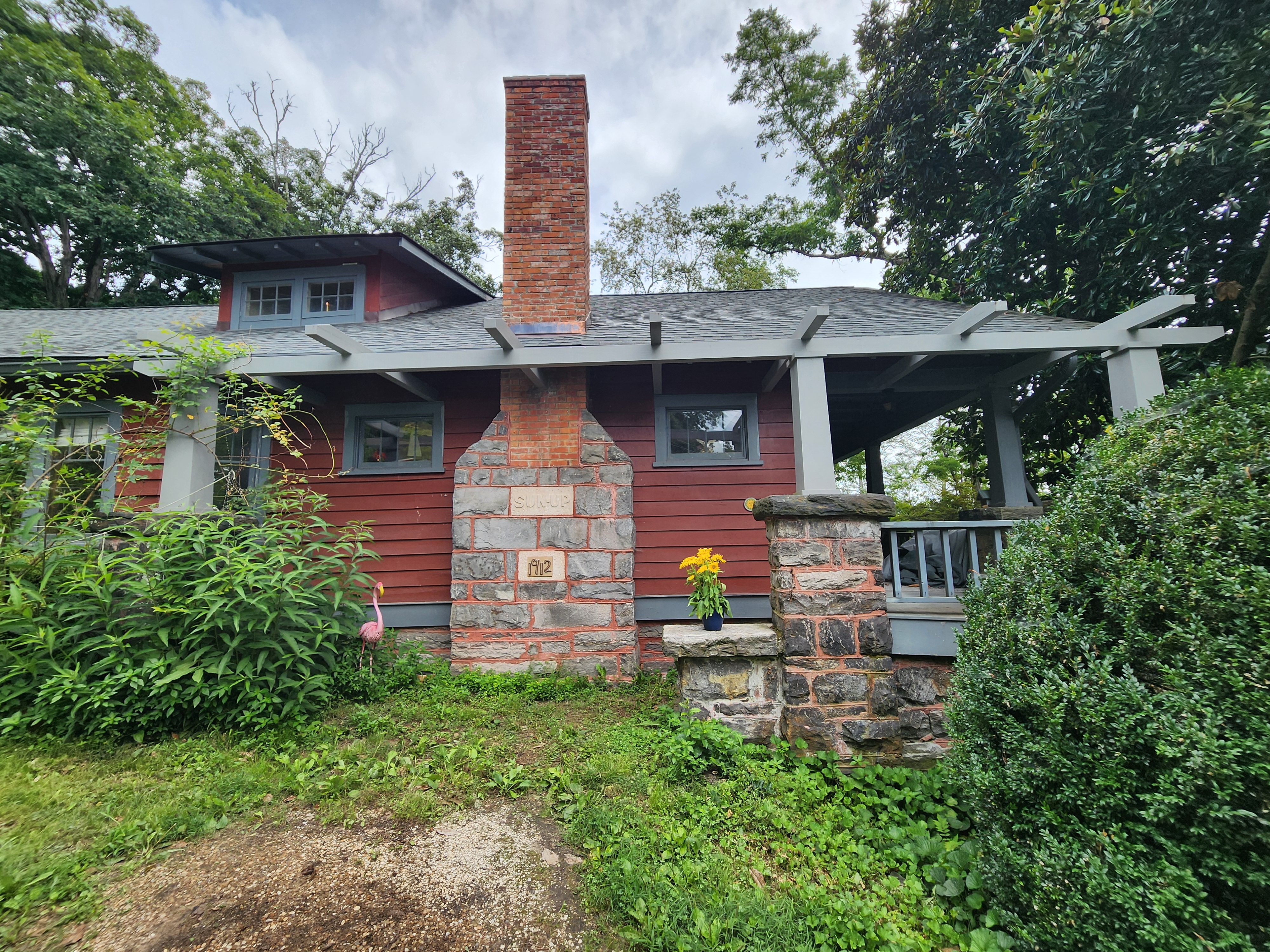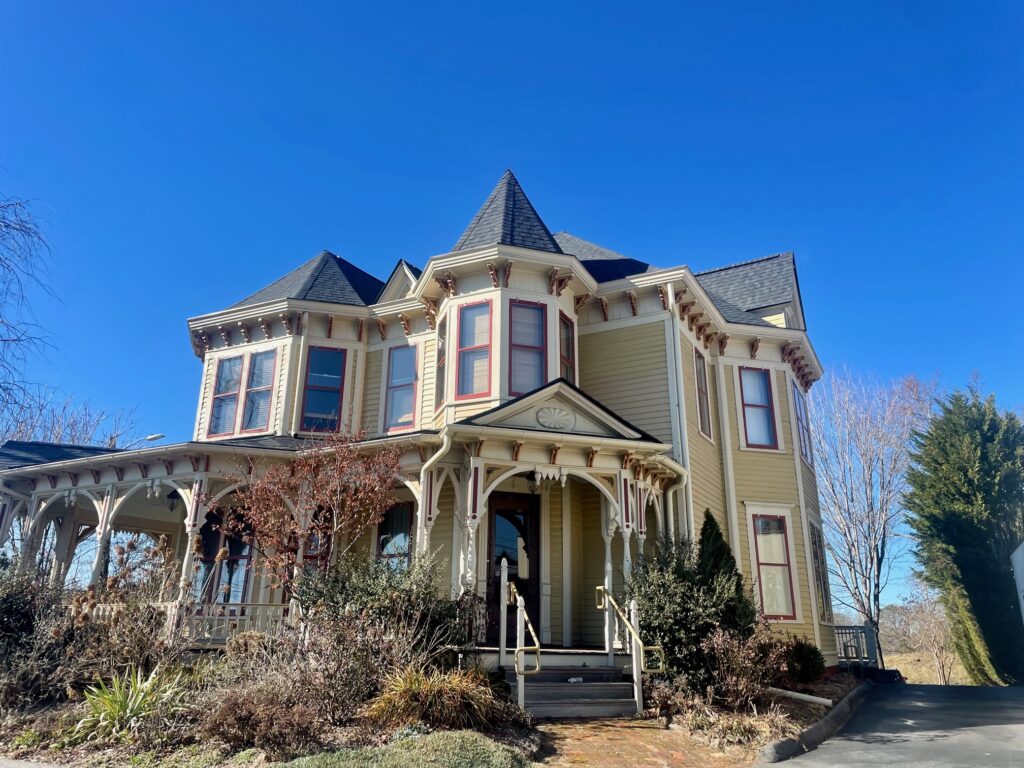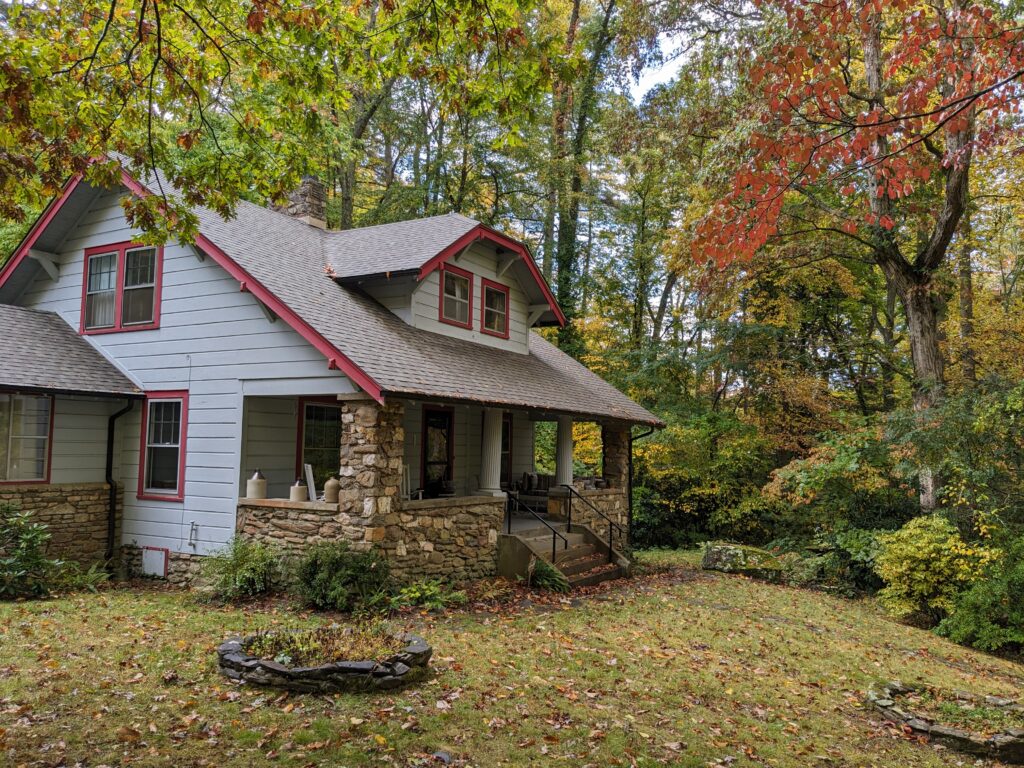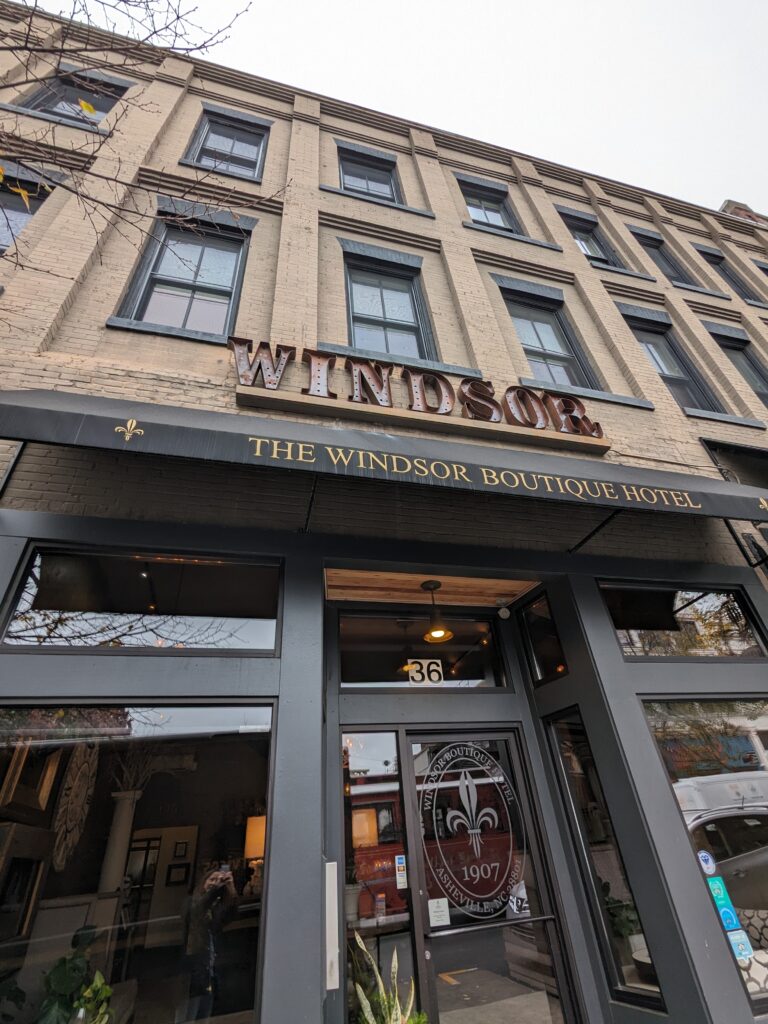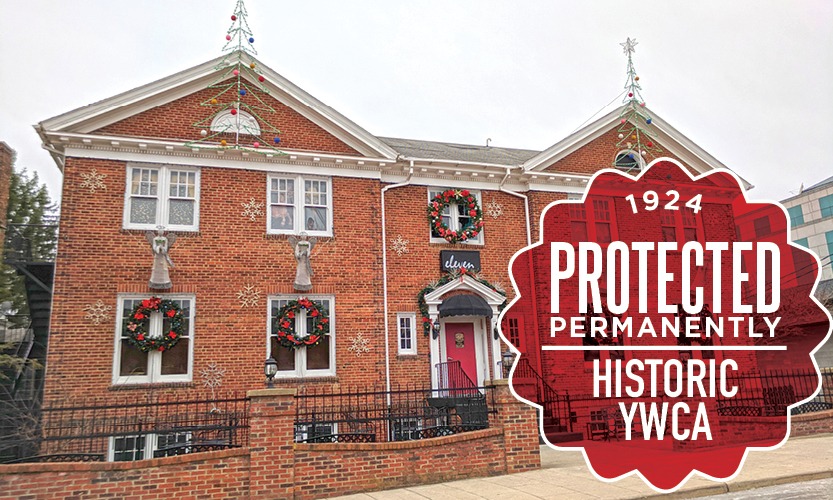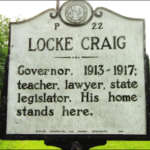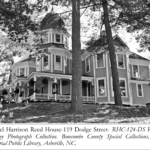![]()
Easement Properties
Permanently Protected
19 - 25 S. French Broad Avenue Properties
The building at 19 South Broad was built ca. 1905 as a boarding house, and the building at 25 South Broad was built ca. 1924 as a multi-family dwelling. South Broad Avenue developed as a residential neighborhood, but these structures are the only two remaining on the block. We are excited to permanently protect these residential structures as a representation of the original neighborhood development.
130 - 132 Biltmore Avenue
The two-story, uncoursed rubble granite building at 130—132 Biltmore Avenue with a high, slate-shingle hipped roof was built ca. 1905 as flats or multi-family housing. The building is part of a row of small apartment buildings originally constructed at the lower end of Biltmore Avenue. We are excited that this building now joins the two remaining historic apartment buildings at 134 Biltmore Avenue by being permanently protected.
134 - 138 Biltmore Avenue
The building at 134 – 136-1/2 Biltmore was designed by Richard Sharp Smith around 1905, and the building at 138 – 140 Biltmore was constructed sometime between 1913 and 1917. These houses were constructed as flats or duplex, which was typical of the single and multi-family houses that were developed along this section of Biltmore Avenue. These two buildings and our easement properties across the street at 123 – 137 Biltmore Avenue are the only residential buildings that remain.
B&B Motor Company - 84-94 Coxe Avenue
 The B. and B. Motor Company Building is the earliest of the auto showroom and service facilities on Coxe Avenue and one of the first structures to be built on the Avenue after its opening. Unlike later auto buildings on the Avenue, the B and B building is only two stories high, perhaps a reflection of land cost pressures that had yet to come or a relatively-limited demand for the Chevrolet dealer’s autos in 1925. The B and B facility was organized much as modern dealerships are, with display and servicing taking place on the first floor. Like the other Coxe Avenue dealerships, it used a corner location to maximum effect, with a street-level display of its showrooms and an attractively-ornamented facade.
The B. and B. Motor Company Building is the earliest of the auto showroom and service facilities on Coxe Avenue and one of the first structures to be built on the Avenue after its opening. Unlike later auto buildings on the Avenue, the B and B building is only two stories high, perhaps a reflection of land cost pressures that had yet to come or a relatively-limited demand for the Chevrolet dealer’s autos in 1925. The B and B facility was organized much as modern dealerships are, with display and servicing taking place on the first floor. Like the other Coxe Avenue dealerships, it used a corner location to maximum effect, with a street-level display of its showrooms and an attractively-ornamented facade.
Beaufort Lodge - 61 North Liberty Street
Historically named the Beaufort Lodge, this beautiful Queen Anne Victorian style house was built by Theodore Fulton Davidson, designed by architect A.L Melton, and completed in 1895 – in the same era as the Biltmore Estate. The tiger oak woodworking and moldings (now an extinct species) and the distinctively colored tile fireplaces in the Main House are all original appointments to the Beaufort Lodge.
Theodore Davidson was an Asheville lawyer who was both the Attorney General of North Carolina, and later the Mayor of Asheville. The Beaufort Lodge was built for his wife Sarah Lindsey Carter Davidson, and was the scene of many gala social events and political deliberations. Today, Beaufort House Inn stands as a testament to the style and workmanship created at the turn of the century in Asheville.
Brigman Chambers House
1006 Reems Creek Road
The Brigman-Chambers House is a symmetrical two-story I-House with Queen Anne detailing. The house’s original portion is a ca. 1845 one-and-one half story, two room log structure. In ca. 1880, the house was expanded, and the original log house was incorporated into the lower level of the ell rear of the I-House. The house has exceptional details from both periods of construction and interior woodwork designed and fabricated by local builder Fabe Morris. The house was owned by the Brigman and Chambers families, local farmers and land speculators, who were some of the earliest settlers in Buncombe County. To permanently save the house, the homeowner donated a historic preservation easement to PSABC in 1999.
Burlington Hotel - 60 & 64 Biltmore Avenue
The two-story brick buildings at 60 and 64 Biltmore Avenue were constructed in ca. 1925. The building at 60 Biltmore Avenue first appeared in the 1926 city directory as the Burlington Hotel. The hotel was listed at this address through 1931 when the name of the hotel changed to the Princeton Hotel. The building at 64 Biltmore Avenue first appeared in the 1925 city directory as Ray Tire Co. It continued to be used as an auto service station until ca. 1940.
Flatiron Building - 20 Battery Park Avenue
Completed in 1927, the Flatiron was designed by architect Albert Wirth as part of E.W. Grove’s redevelopment of the Battery Park area.
“In 1927, Asheville’s first radio station came into existence as WWNC (Wonderful Western North Carolina), broadcasting from the Flatiron Building. It claimed to be the highest broadcasting station in eastern America at an altitude of 2,496 feet. The next year, WWNC was bought by the Asheville Citizen, and several years later the studios and offices were moved to the newspaper’s new building on O. Henry Avenue.” – Asheville Mountain Majesty by Lou Harshaw.
Flora Sorrell Boarding House - 100 Biltmore Avenue
French Broad Avenue Methodist Church - 14 North French Broad Avenue
This historic French Broad Avenue Methodist Church at 14 North French Broad Avenue is a Tudoresque red brick church trimmed with limestone, constructed in 1928. The church was designed by Charles N. Parker to replace an earlier frame building that had burned down. The building was used as a church until 2004 when it was converted into a recording studio.
Gudger House - 89 Montford Avenue
Gudger House is PSABC’s first historic preservation easement property. The ca. 1900 house is an asymmetrical two-story Queen Anne style house located in the Montford Historic District. It was constructed for Henry Lamar Gudger. The Gudger family remained in the house until the 1950s. By the 1970s, the house fell into disrepair. To prevent its demolition, PSABC acquired the house in 1978. Volunteers worked to stabilize the building while a new owner could be located. In 1981, the Legal Aid Service of Buncombe County Bar Association purchased the house. In the following years, the house was rehabilitated into a law office.
J.E. Hampton Building - 9-13 Broadway Street
Manor Inn
265 Charlotte Street
The Manor Inn is the centerpiece of Albemarle Park. The original section of the Manor opened on New Year’s Day 1899. Its success was immediate. In 1903, a wing was added on the west side of the building, and in 1914 the eastern wing was added. Over time, the Manor Inn evolved into a residential hotel and then closed in 1984. To rescue the building from demolition, PSABC purchased the building in 1989. PSABC sold the building to the newly formed Manor Inn Apartment Group in 1991 with our second historic preservation easement. In 1991, the Manor began being rehabilitated into apartments. It opened shortly after and remains apartments today.
George A. Mears House - 137 Biltmore Avenue
The George A. Mears House located at 137 Biltmore Avenue, a two and a half story brick Queen Anne style building constructed in 1885 by George Mears. Mears was an Asheville merchant who was in business between 1870 and 1910 on South Main Street, principally with his Mears Daylight Store, which burned in the 1920s (the building was so named because of its large expanses of glass). One of only a handful of remaining late nineteenth century residential buildings in downtown Asheville, the Mears House is also one of the last relatively intact examples of the types of houses that once populated the area, with architectural styles that included Greek Revival, Cottage Gothic, eclectic Victorian, and Queen Anne. Particularly notable is the house’s elaborate slate-shingled mansard roof with prominent gables and gable-roofed dormers with finials. Former Vice Mayor, Edward C. Hay, Jr., had this to say about the home: “When our partnership bought the property in 1984 the building at 137 was boarded up and had gone downhill considerably. Volunteers from the Asheville Police Department would decorate the house at Halloween to give children a safe place to Trick or Treat. We were able to preserve the property and do considerable restoration, and over the years the historic place has become dear to us. Conveying it to folks who will further enhance and restore the character of the property feels very good. We couldn’t be happier.”
Public Service Co. and Campbell Motor Co. - 168 Patton Avenue
In December, we accepted an easement donation on the Public Service Company building on Patton Ave. Designed by Six Associates and completed in 1961, it is a distinctively Modernist building with concrete “Y” columns and geometric structural details. The Public Service Company building is a great example of mid-century modern commercial design.
Ravenscroft School - 84 Coxe Avenue
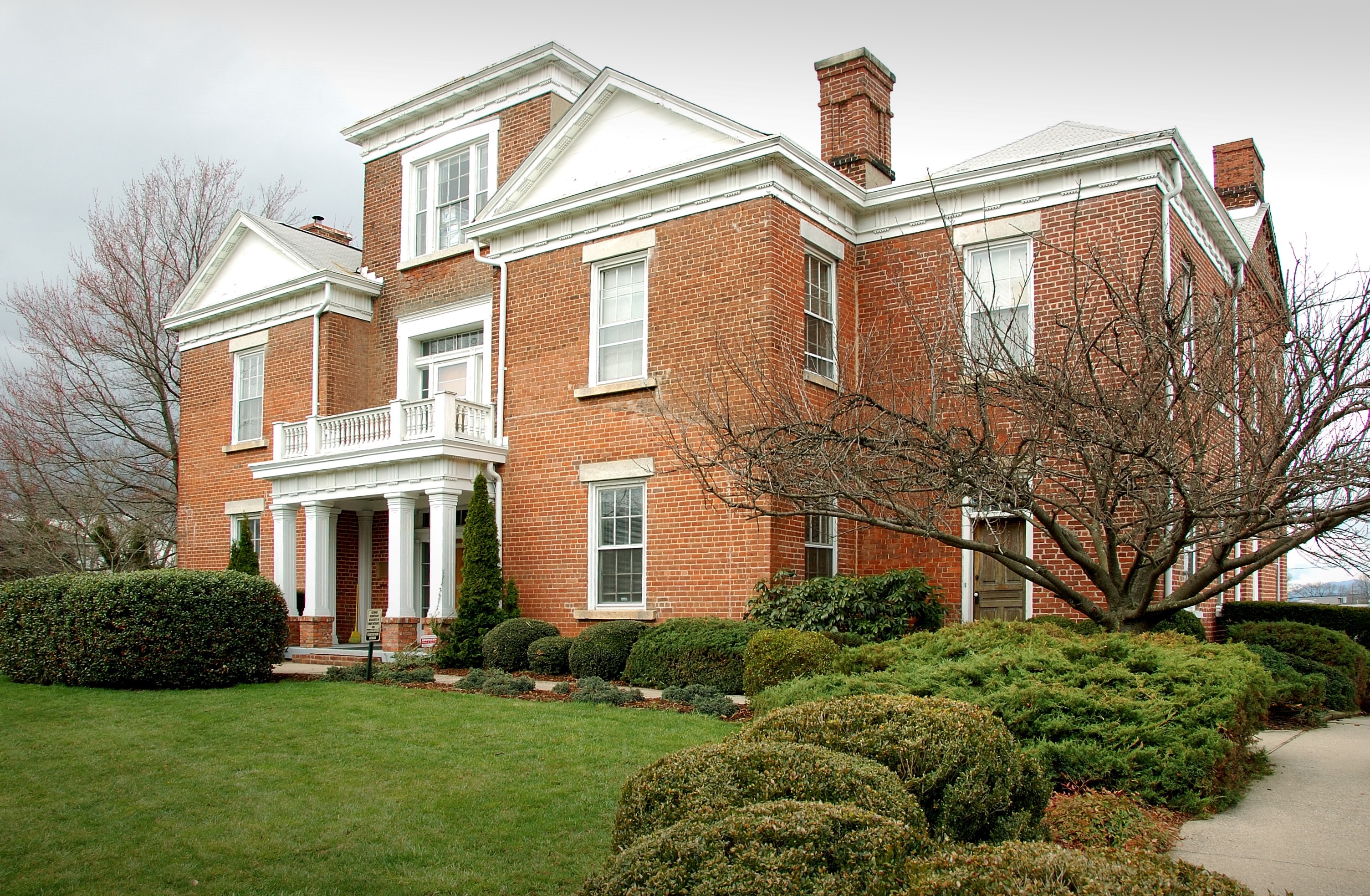 Built during the 1840s as a residence, the Ravenscroft School building is, for western North Carolina, an unusually academically-detailed example of the Greek Revival style, complete with pegged modillions and triglyphs and interior door surrounds with acanthus corner blocks. Its massing, apparently derived from a plate of an Italianate house design in one of A. J. Downing’s pattern books, is equally uncommon in its use of a recessed three-story central tower with flanking pedimented pavilions. In 1856 the Reverend Jarvis Buxton, rector of Trinity Parish in Asheville, announced the opening of the Ravenscroft School for Boys in the house, located on 13~acres off Church Street. The Episcopal State Convention had established the school in 1855 to serve as the diocese’s boys theological and classical college and as a memorial to Bishop John Stark Ravenscroft. Reverend Lucian Holmes served as the headmaster from 1861 to 1864, when the Civil War forced the school’s closing. After the war the Ravenscroft Associate Missions and Training School was opened in the building, allowing young men to train for the ministry under Reverend Buxton. A new building was erected for the training school in 1887 and the Diocesan convention re-established the boys school in the house. The school closed around the turn of the century, and the building was used as a boarding or rooming house until 1977.
Built during the 1840s as a residence, the Ravenscroft School building is, for western North Carolina, an unusually academically-detailed example of the Greek Revival style, complete with pegged modillions and triglyphs and interior door surrounds with acanthus corner blocks. Its massing, apparently derived from a plate of an Italianate house design in one of A. J. Downing’s pattern books, is equally uncommon in its use of a recessed three-story central tower with flanking pedimented pavilions. In 1856 the Reverend Jarvis Buxton, rector of Trinity Parish in Asheville, announced the opening of the Ravenscroft School for Boys in the house, located on 13~acres off Church Street. The Episcopal State Convention had established the school in 1855 to serve as the diocese’s boys theological and classical college and as a memorial to Bishop John Stark Ravenscroft. Reverend Lucian Holmes served as the headmaster from 1861 to 1864, when the Civil War forced the school’s closing. After the war the Ravenscroft Associate Missions and Training School was opened in the building, allowing young men to train for the ministry under Reverend Buxton. A new building was erected for the training school in 1887 and the Diocesan convention re-established the boys school in the house. The school closed around the turn of the century, and the building was used as a boarding or rooming house until 1977.
Reynolds Mansion - 100 Reynolds Heights
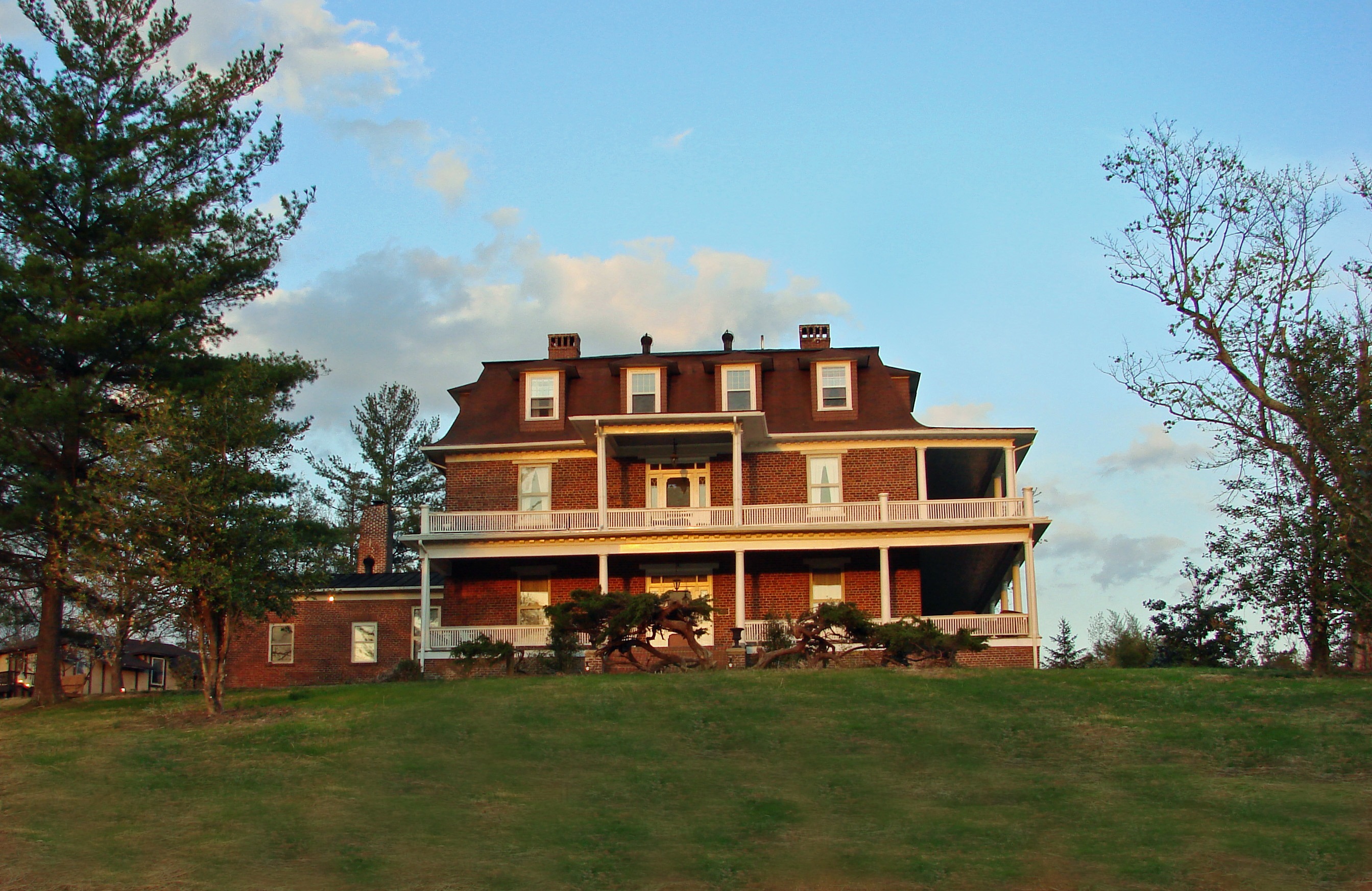 The Reynolds House was erected in the mid-1850s by “Colonel 11 Daniel Reynolds, a locally prominent farmer and former hotel owner, who only recently had waged an unsuccessful campaign against kinsman Zebulon Baird Vance for a seat in the North Carolina House of Commons. The house was originally a double-pile plan brick structure, a conservative but substantial plan type built only by the most prosperous of western North Carolina’s citizens before the Civil War. The relative prosperity surrounding the Reynolds House declined markedly during and after the War; and by the time of his death in 1878, Daniel Reynold’s estate had been reduced to fairly modest proportions. The house was subsequently owned by Asheville businessman William Taswell Reynolds, whose son, Robert Rice (“Our Bob”) Reynolds, would one day become one of the most colorful and controversial members of the United States Senate. It is very likely that Senator Reynolds spent at least some time at the Reynolds House during his youth; and it is virtually certain that he visited there frequently as an adult, during the years that the house was owned and occupied by his mother and uncle. Reynolds’ uncle, Nathaniel Augustus Reynolds, undertook an extensive renovation and expansion of the Reynolds House soon after paying off an existing mortgage in 1904. These alterations included the addition of a third floor with a mansard roof and dormers, the addition of Colonial Revival porches and interior woodwork, and the installation of bathrooms. Nathaniel Reynolds lived there from about 1930 until his death in 1950. The house remained in the Reynolds family until 1973.
The Reynolds House was erected in the mid-1850s by “Colonel 11 Daniel Reynolds, a locally prominent farmer and former hotel owner, who only recently had waged an unsuccessful campaign against kinsman Zebulon Baird Vance for a seat in the North Carolina House of Commons. The house was originally a double-pile plan brick structure, a conservative but substantial plan type built only by the most prosperous of western North Carolina’s citizens before the Civil War. The relative prosperity surrounding the Reynolds House declined markedly during and after the War; and by the time of his death in 1878, Daniel Reynold’s estate had been reduced to fairly modest proportions. The house was subsequently owned by Asheville businessman William Taswell Reynolds, whose son, Robert Rice (“Our Bob”) Reynolds, would one day become one of the most colorful and controversial members of the United States Senate. It is very likely that Senator Reynolds spent at least some time at the Reynolds House during his youth; and it is virtually certain that he visited there frequently as an adult, during the years that the house was owned and occupied by his mother and uncle. Reynolds’ uncle, Nathaniel Augustus Reynolds, undertook an extensive renovation and expansion of the Reynolds House soon after paying off an existing mortgage in 1904. These alterations included the addition of a third floor with a mansard roof and dormers, the addition of Colonial Revival porches and interior woodwork, and the installation of bathrooms. Nathaniel Reynolds lived there from about 1930 until his death in 1950. The house remained in the Reynolds family until 1973.
Rice-Cornell-Brown House
29 Rice Branch Road
The Rice-Cornell-Brown House is one of three mid-19th century houses in the Beaverdam Valley. It is an assemblage of three single-story log and frame blocks with side-gable roofs. The log cabin core was constructed in ca. 1850s. Later additions were added in 1890, 1927, and 1953. The house is an excellent example of the building trends of mid-19th century log cabins evolving into modest farmhouses as families became more established in Beaverdam Valley. In 2001, the homeowner donated a historic preservation easement to PSABC to permanently protect the house.
Sallie Lee Cottage
18 Short Avenue
The Sallie Lee Cottage is a single-story, frame Queen Anne style house with a steeply pitched cross gable roof. It was originally constructed sometime between 1885 and 1888 and was located at 63 Asheland Avenue. In 2001, the owners had plans to demolish the building to redevelop the site. Instead of demolishing the building, they agreed to donate the house to PSABC with the stipulation that the house be moved. PSABC moved the house to Short Street in September 2001. Volunteers helped stabilize the house, and PSABC sold it in 2002 with a preservation easement.
Snider-Sawyer-Leonard House and Carmichael-Leonard House - 123 Biltmore Avenue
Side-by-side on Biltmore Ave, the Snider-Sawyer-Leonard house and the Carmichael-Leonard house were both built around 1890. The two story brick, Snider-Sawyer-Leonard house was built as a private residence and later operated as Dr. Milton Leonard’s animal hospital from the 1940’s through the 1960’s. Though the home sat empty and deteriorating through the early 2000’s, it has since been rehabilitated and is currently in use as law offices. The two story brick [Italianate](https://en.wikipedia.org/wiki/Italianate_architecture) Carmichael-Leonard house was built as a private residence by W. C. Carmichael. It had numerous owners before being purchased by Dr. Leonard and his wife Pearl in 1944, no doubt due to its proximity to his animal hospital next door. The building was rehabilitated in the 1990’s and functions as office space today. 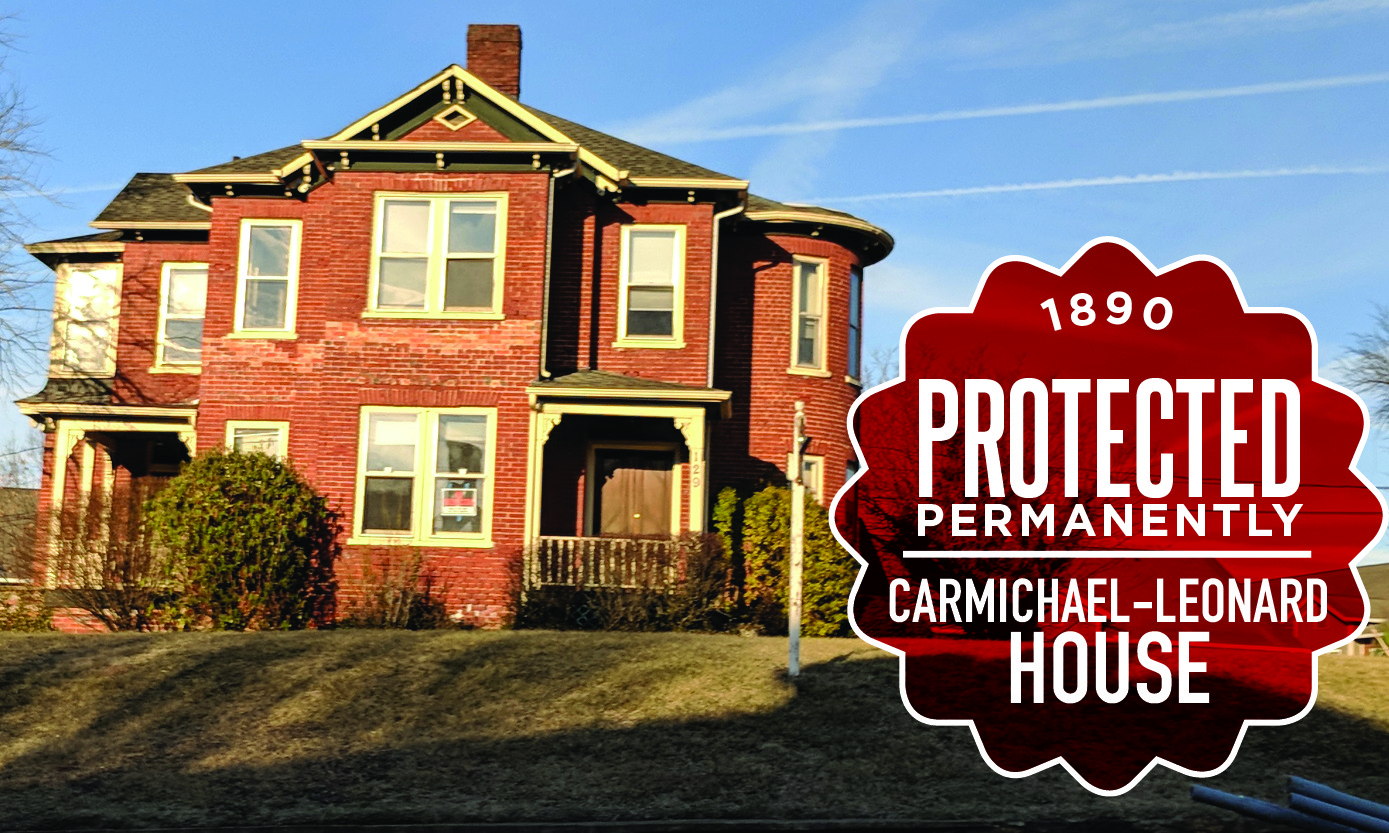
SunUp - 5 Reservoir Road
The 1912 Arts & Crafts style cedar-clad house with a front gable roof was built by J. M. Chiles as a speculative house in the Forest Hill neighborhood. The house was subsequently owned by Dr. C. D. Colby, a Tuberculosis researcher at St. Joseph’s Hospital, who lived there with his family from 1919 until 1959. The house has continued to be used as a single-family home.
Whiteford G. Smith House - 255-263 Haywood Street
The historic Whiteford G. Smith House at 255 and 263 Haywood Street is a two and one-half-story Queen Anne style. The house was built in 1894 for druggist Whiteford G. Smith. The house is an excellent example of a Queen Anne style building and is one of a few remaining houses in Asheville that features an elaborate porch with turned and bracketed posts, pedimented entries, beaded weatherboards, and a bracketed cornice.
Wilma Dykeman House - 189 Lynn Cove Road
In 2019 a preservation easement was donated to PSABC and a conservation easement was donated to RiverLink, to permanently protect the Wilma Dykeman house and land. Dykeman was one of Appalachia’s foremost writers and conservationists and her residence will become home to a new UNC Asheville Writers-in-Residence Program. The house on Lynn Cove Road has been largely unchanged since Dykeman’s death, with her furniture, typewriter and other objects remaining as inspirational reminders of her life and legacy. We are proud to be partners with the many people and organizations that have made this possible including Jim Stokely, Ellen Carr, RiverLink, Wilma Dykeman Legacy and UNC Asheville.
Historic YWCA - 11 Grove Street
The historic YWCA at 11 Grove Street was built in 1924 and designed by William H. Lord. Ten years later a residence hall funded by Samuel E. Moorhead of New York and designed by Clinton MacKenzie was added and is attached by a two-story breezeway. The building has a rich history in the community, most notably, hosting a speaking engagement for First Lady Eleanor Roosevelt in 1956. She was only willing to speak at integrated locations and at the time, the YWCA was the only Asheville location willing to accommodate her. Today the 22,000-square foot building is used for commercial purposes and there are plans for structural work and interior updates.

